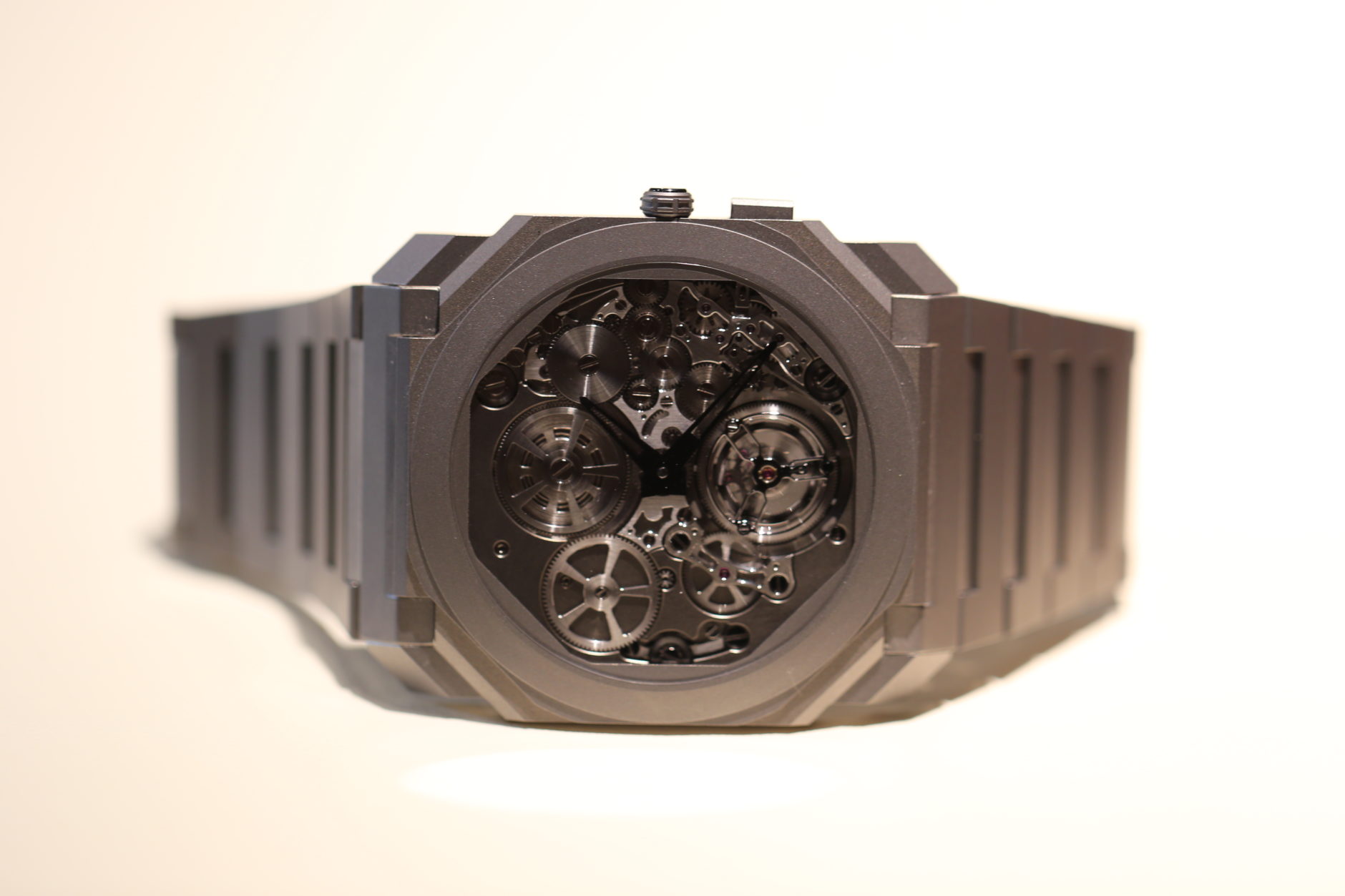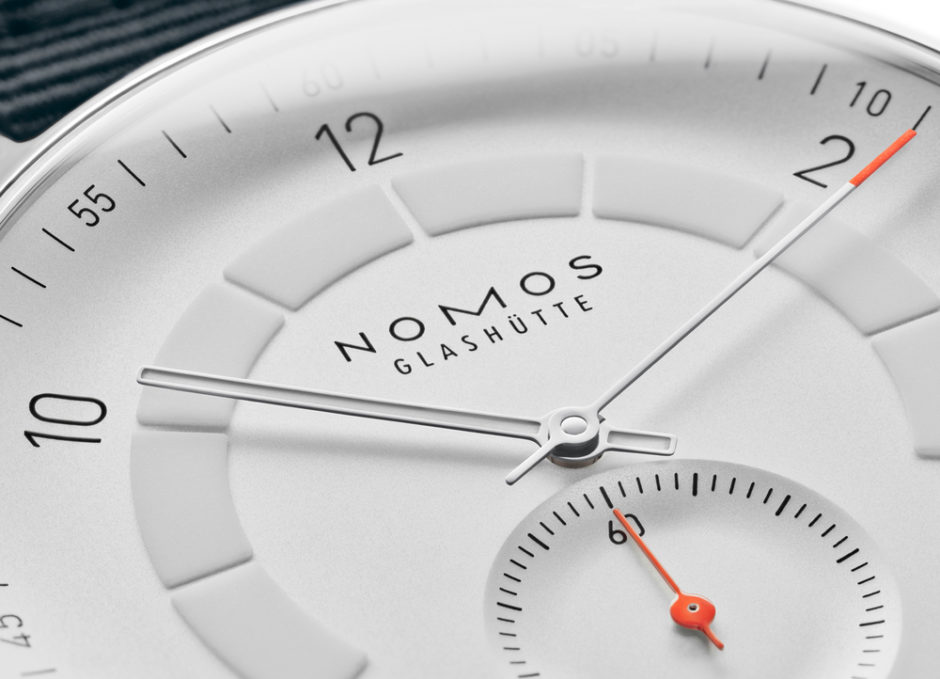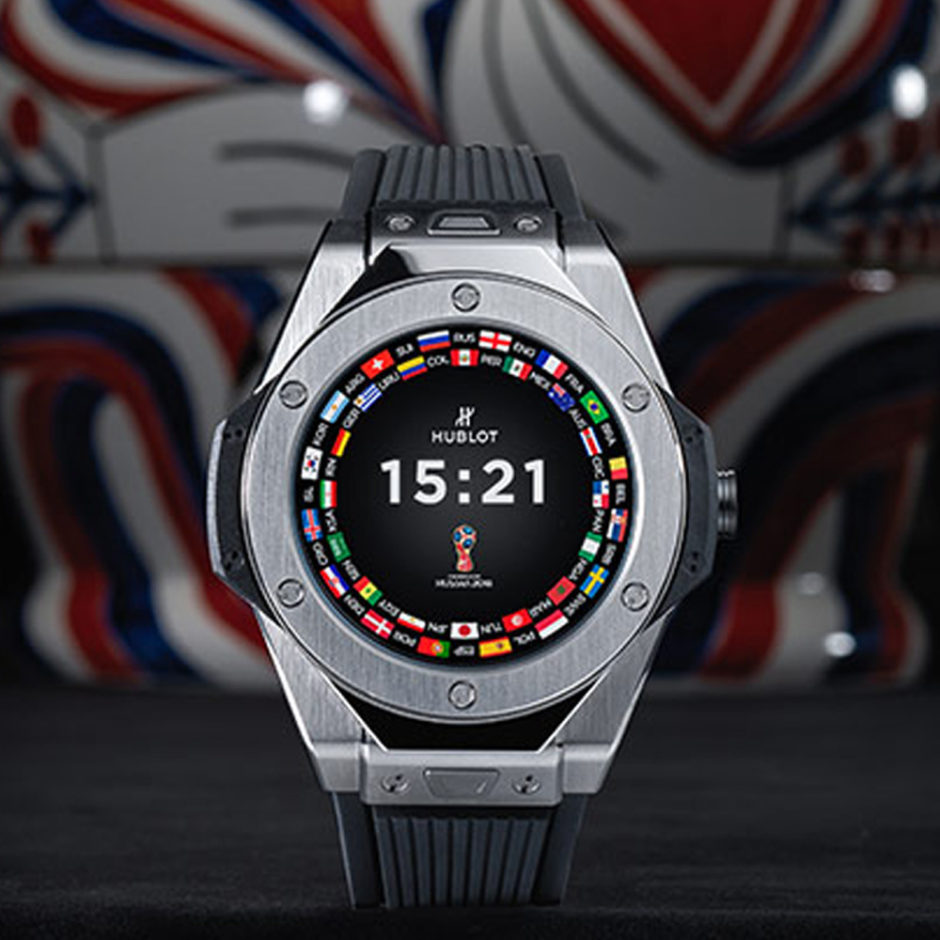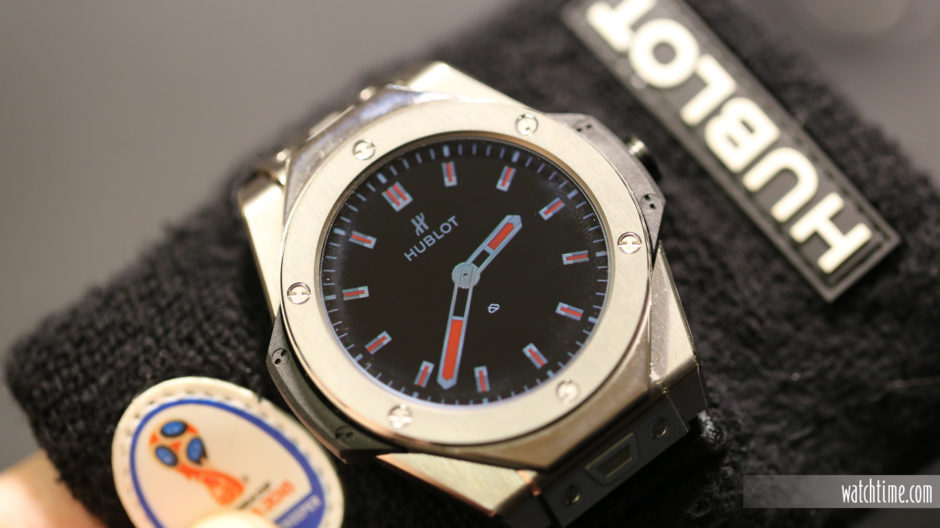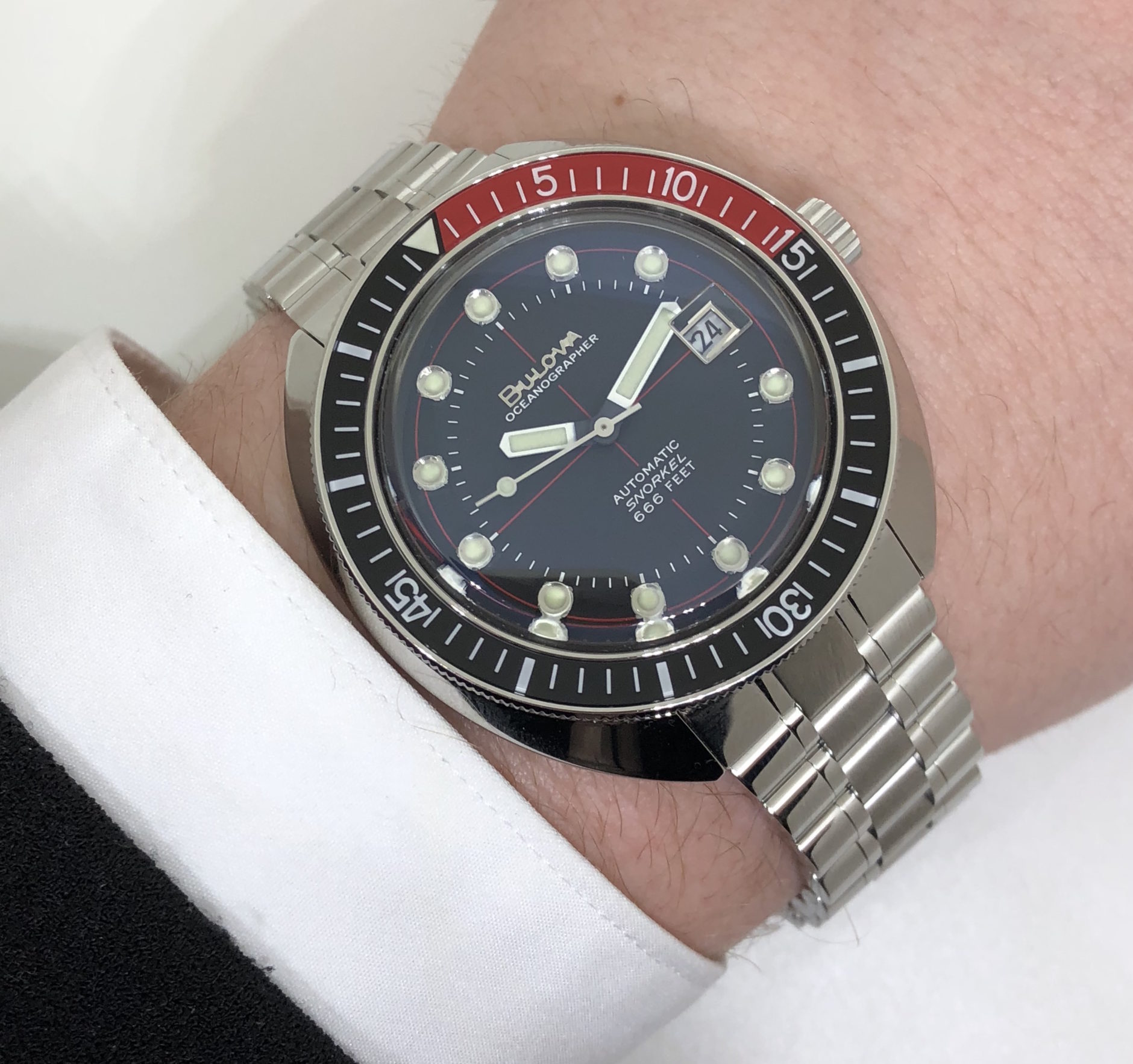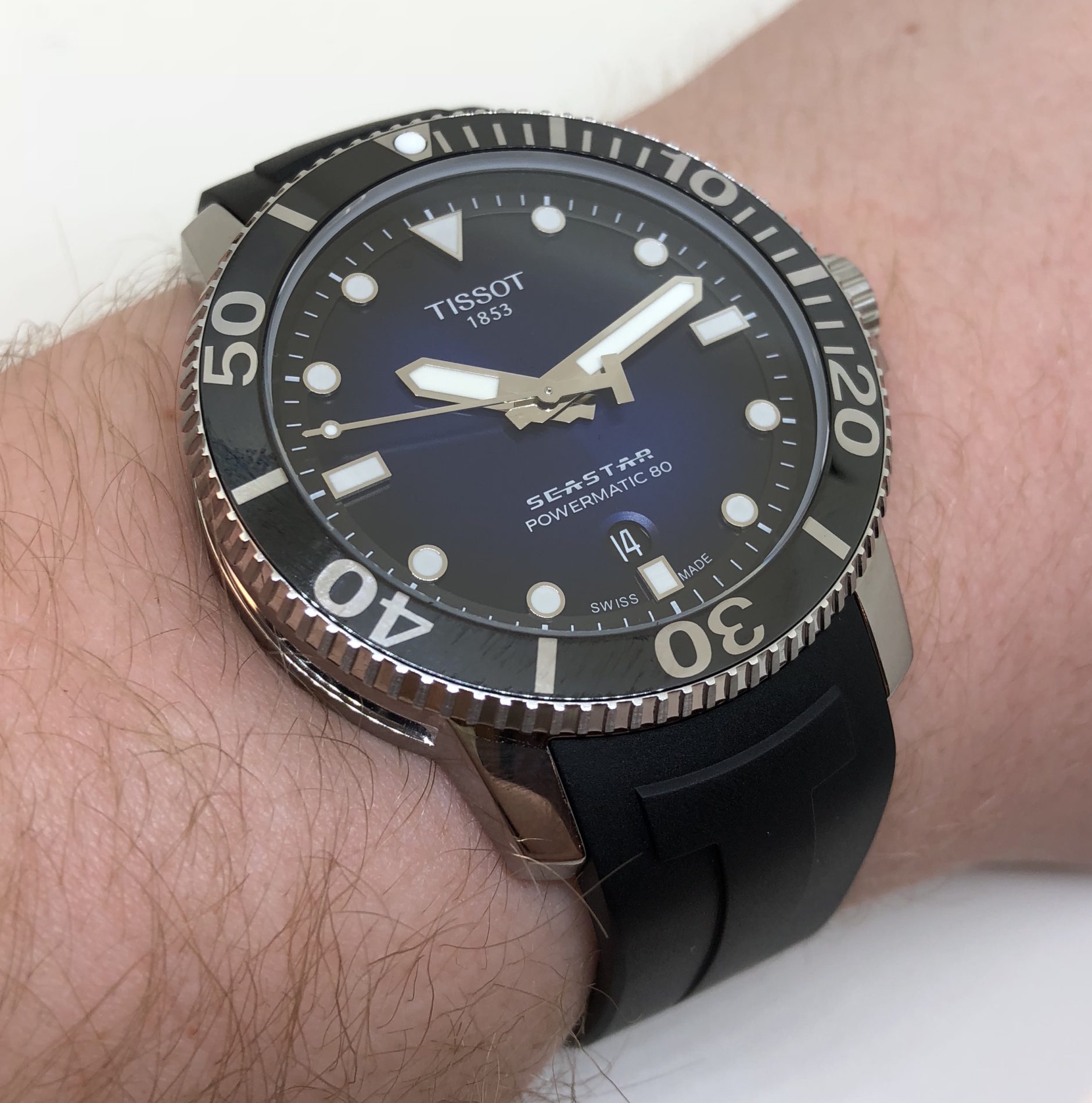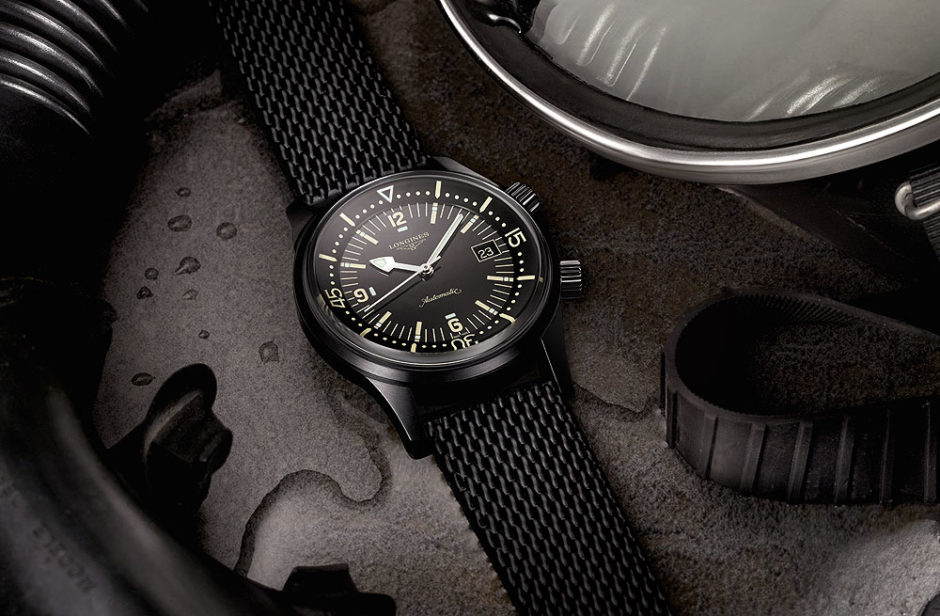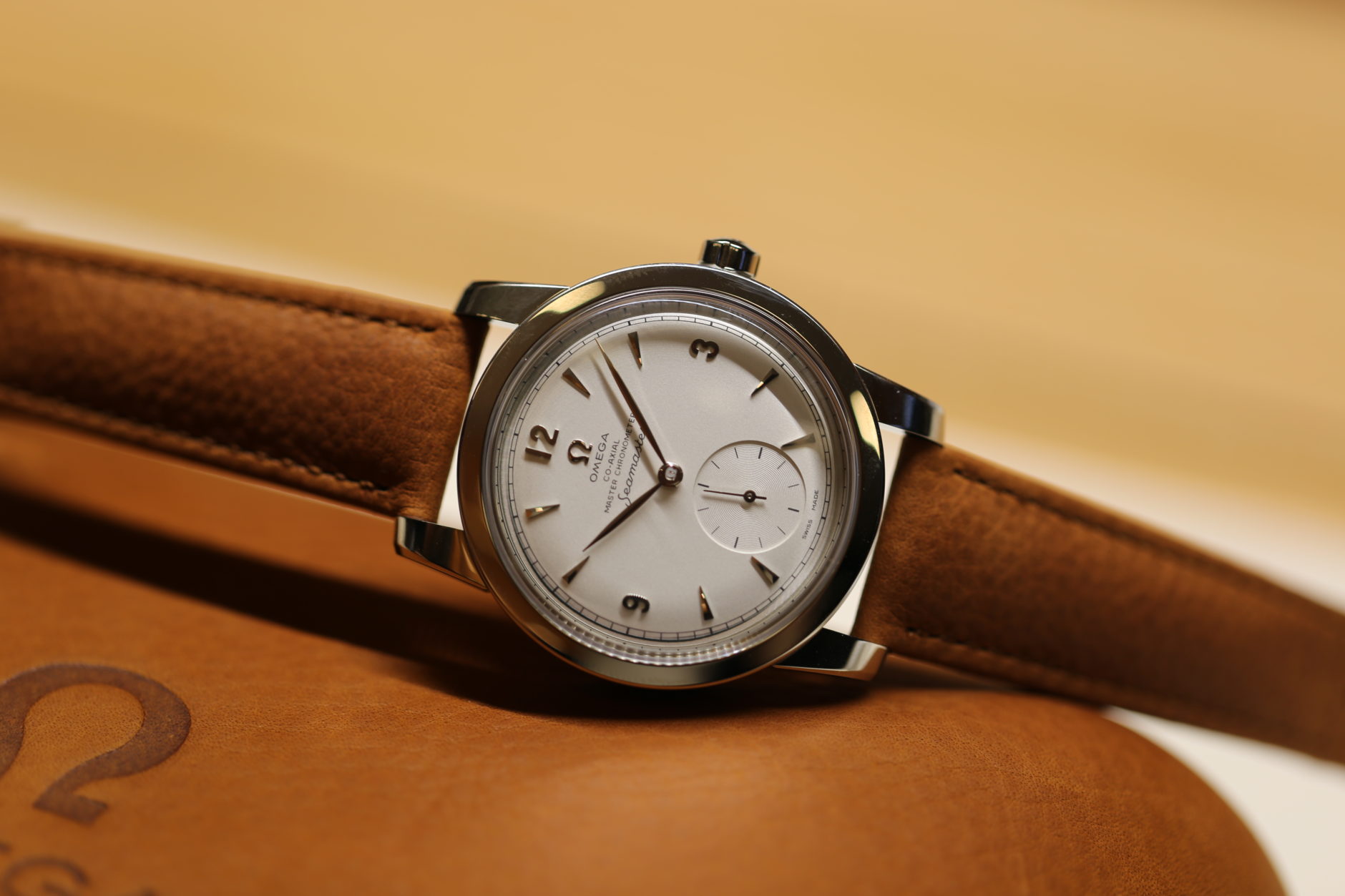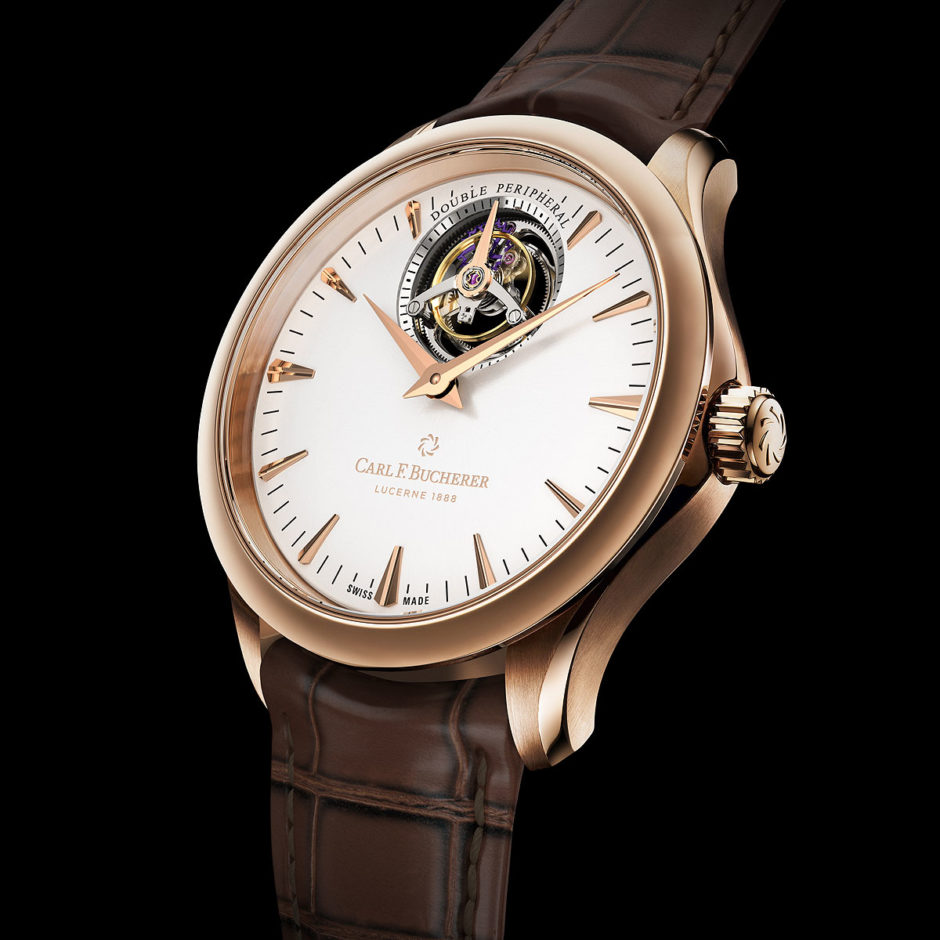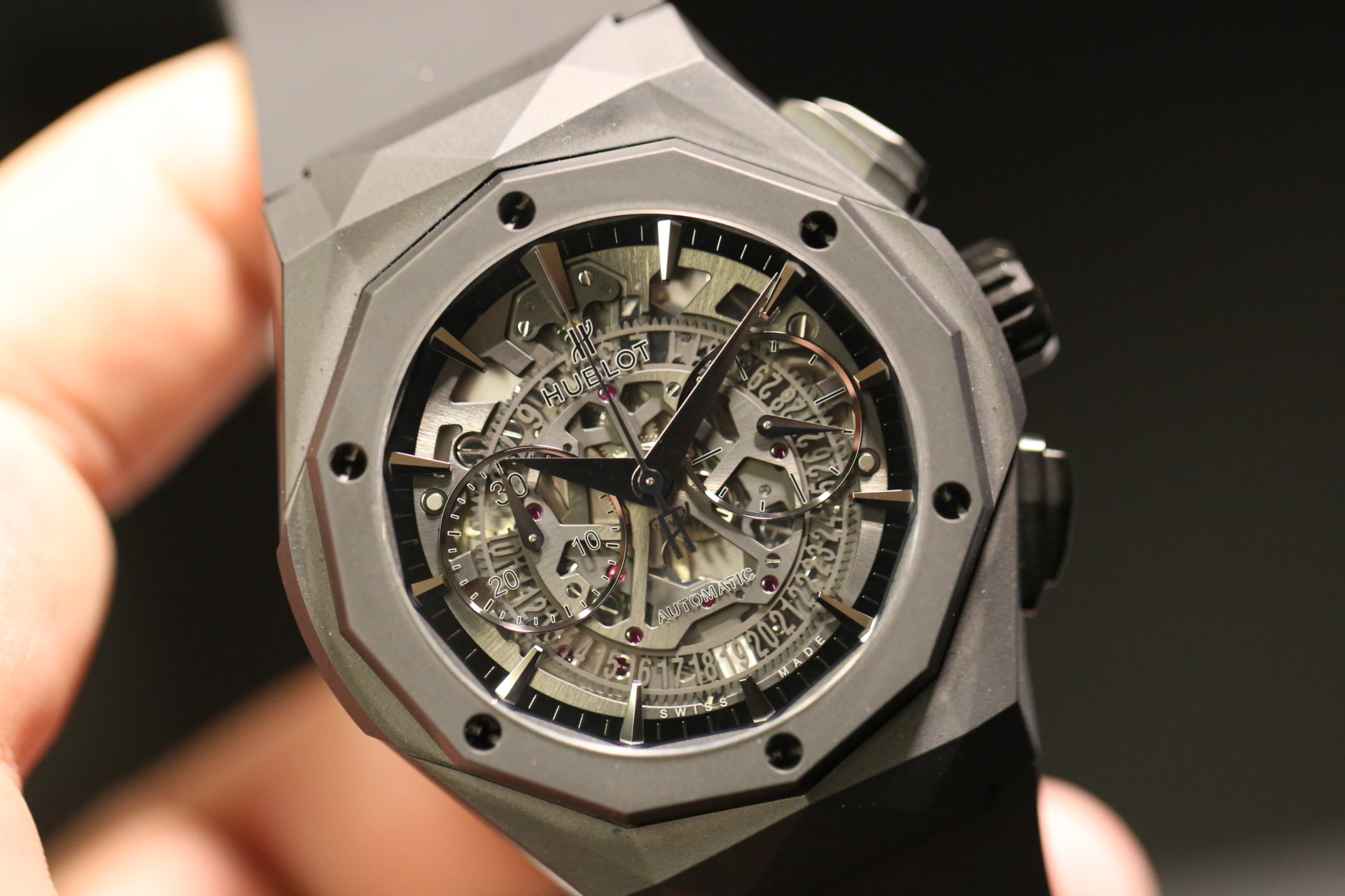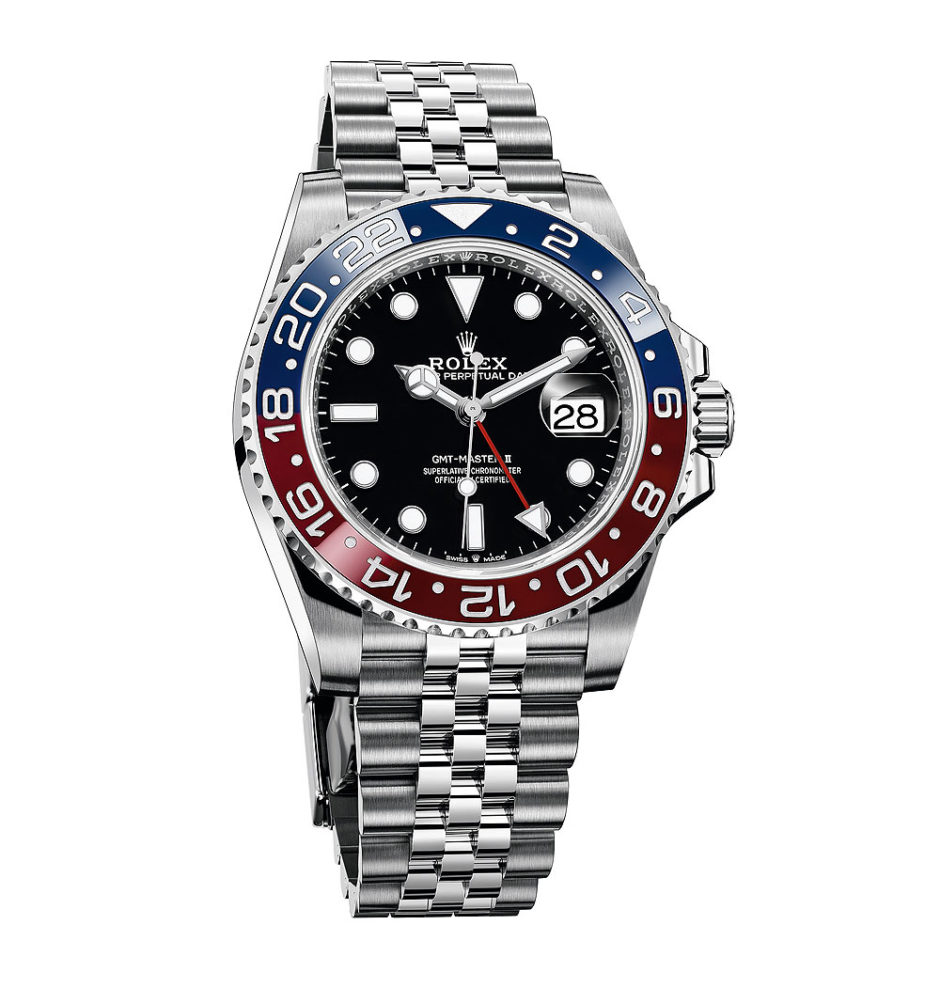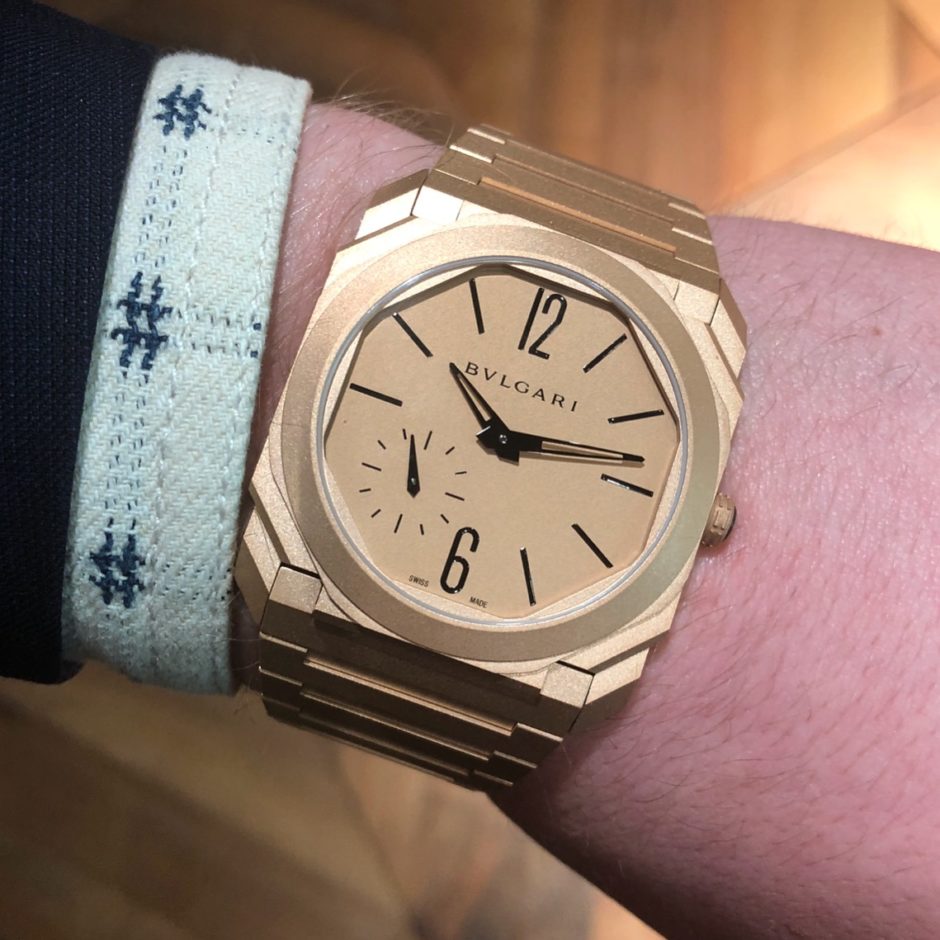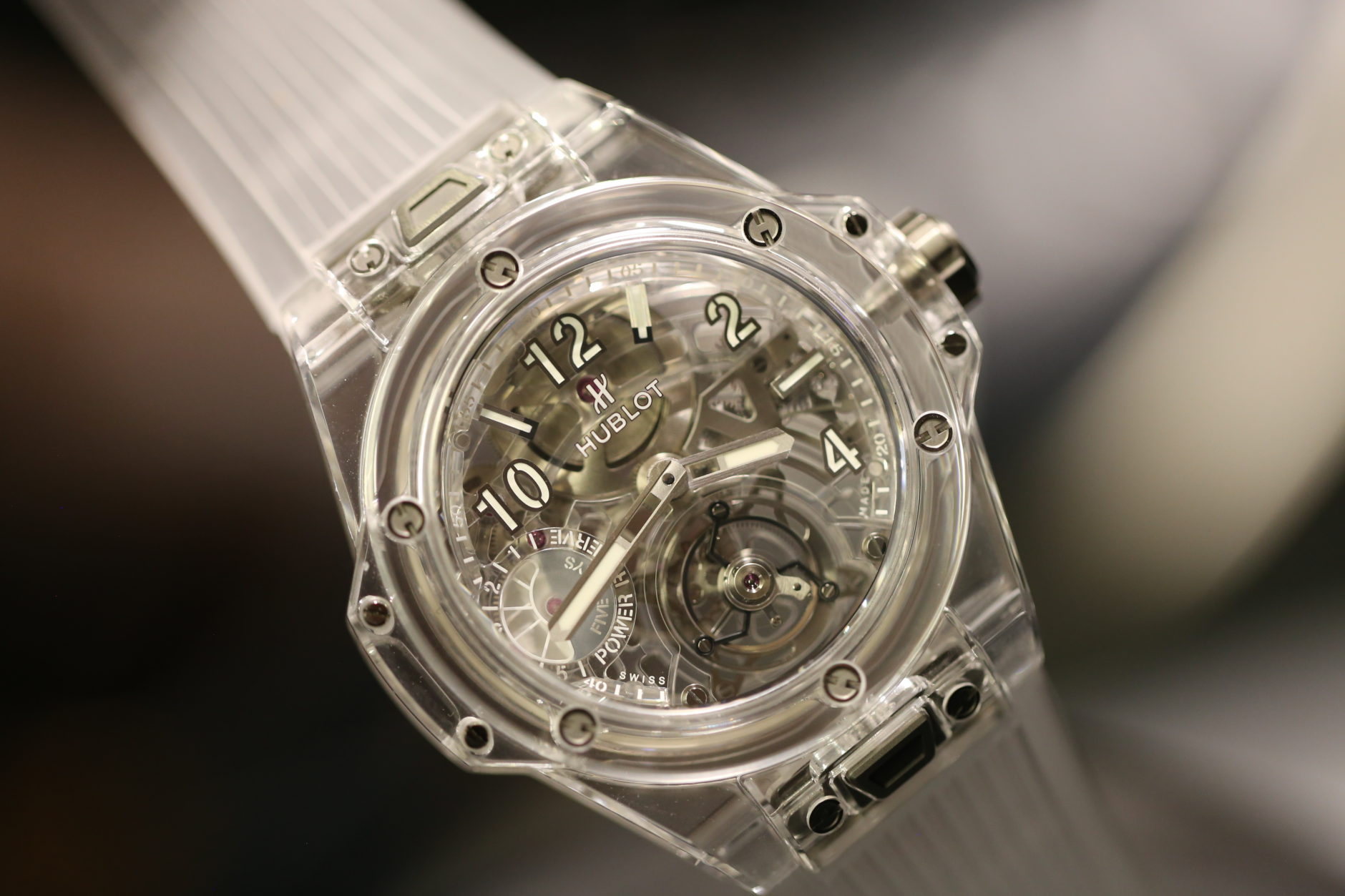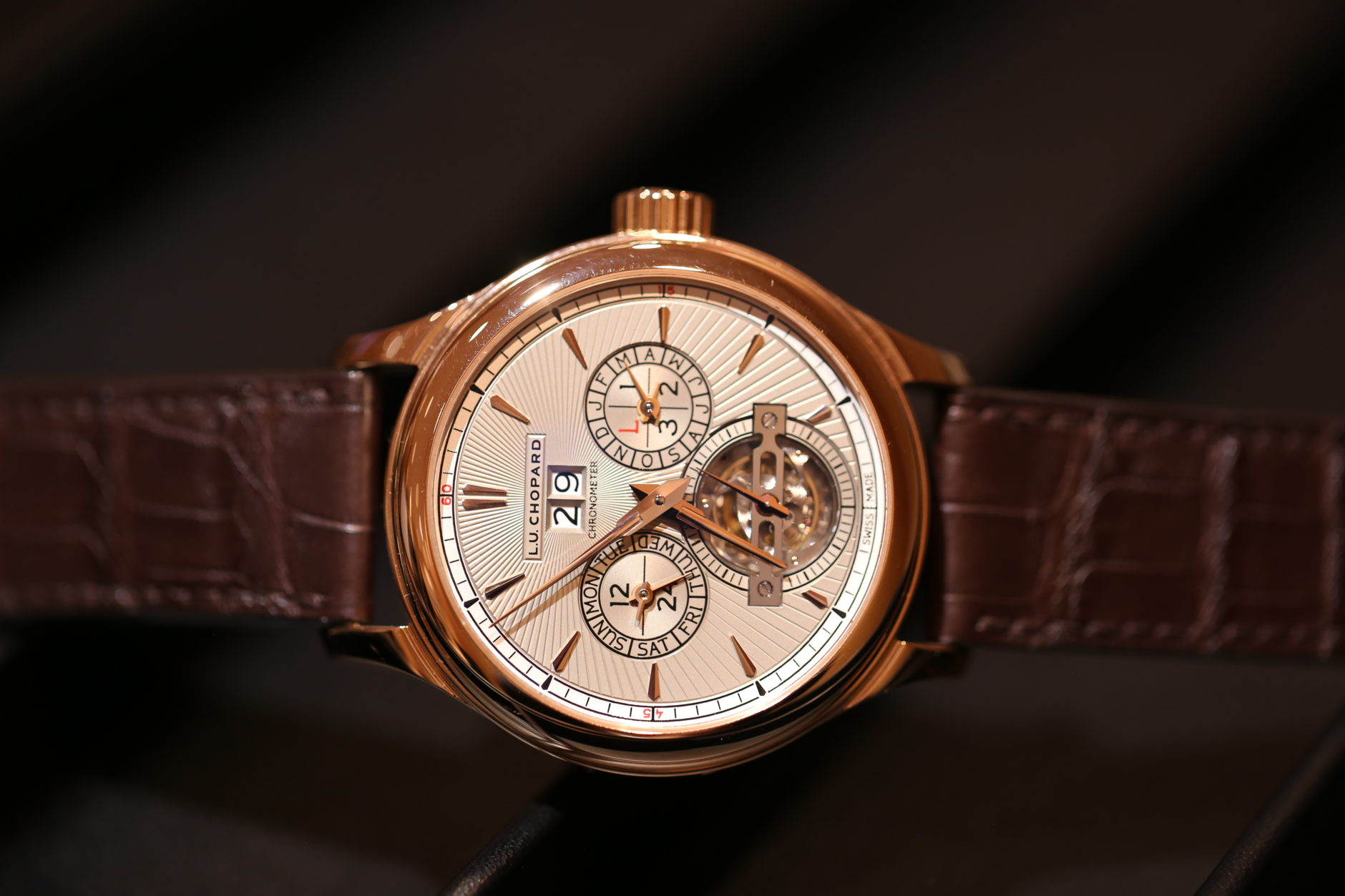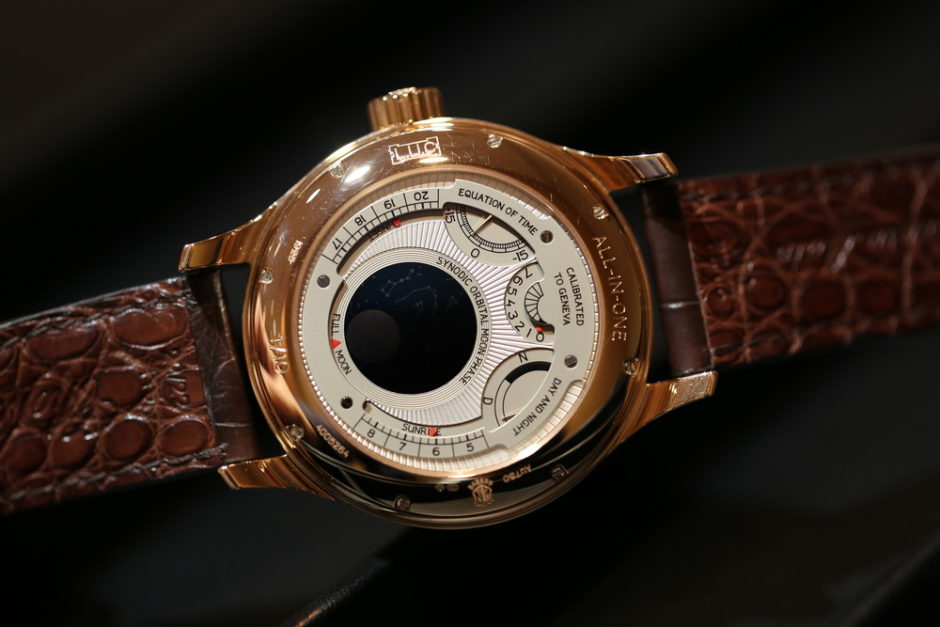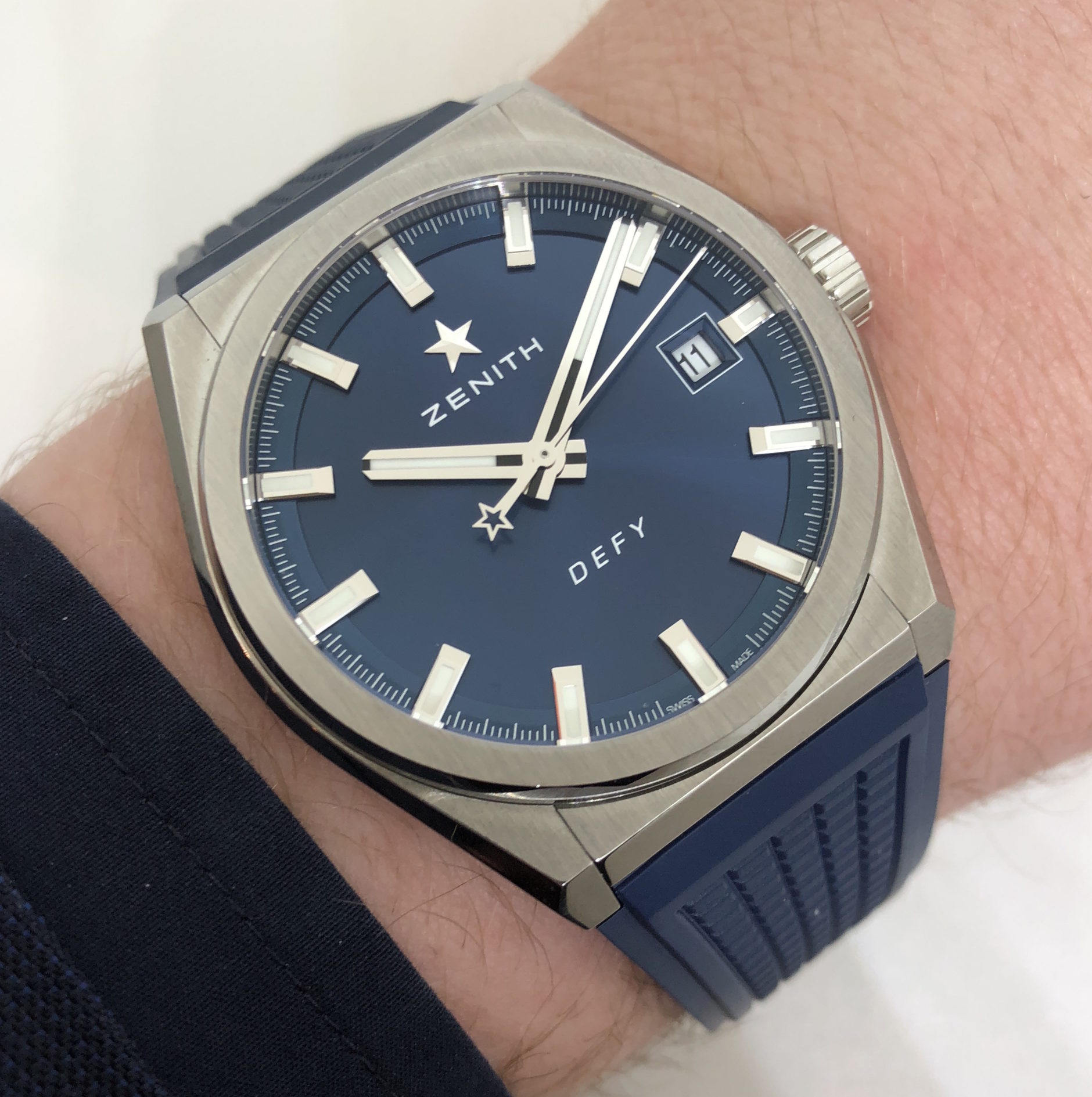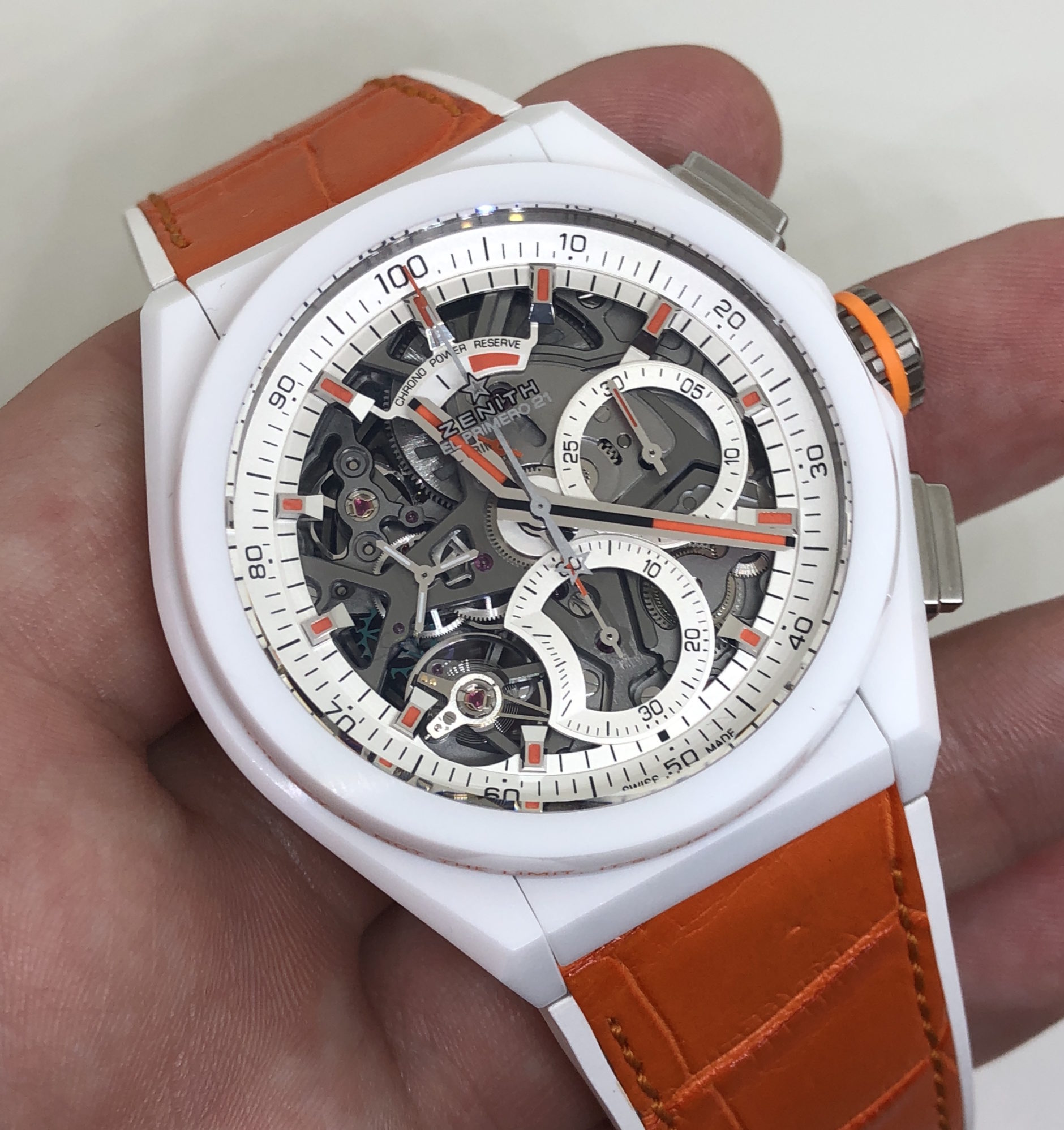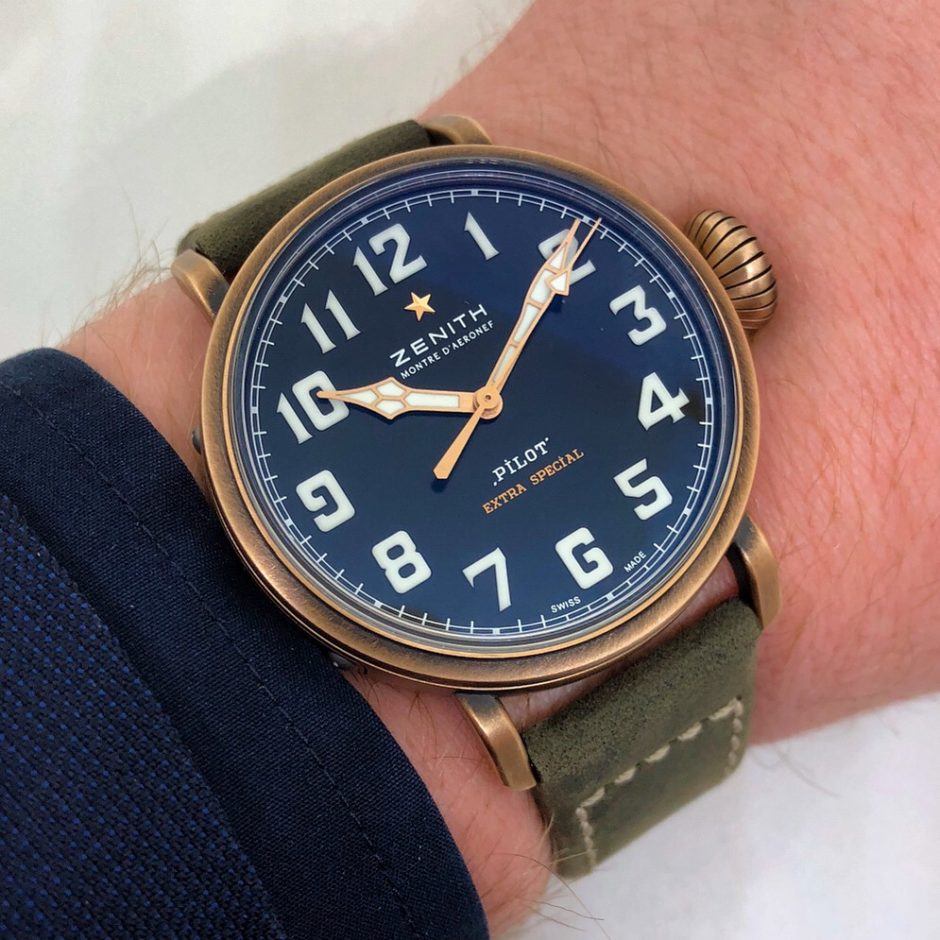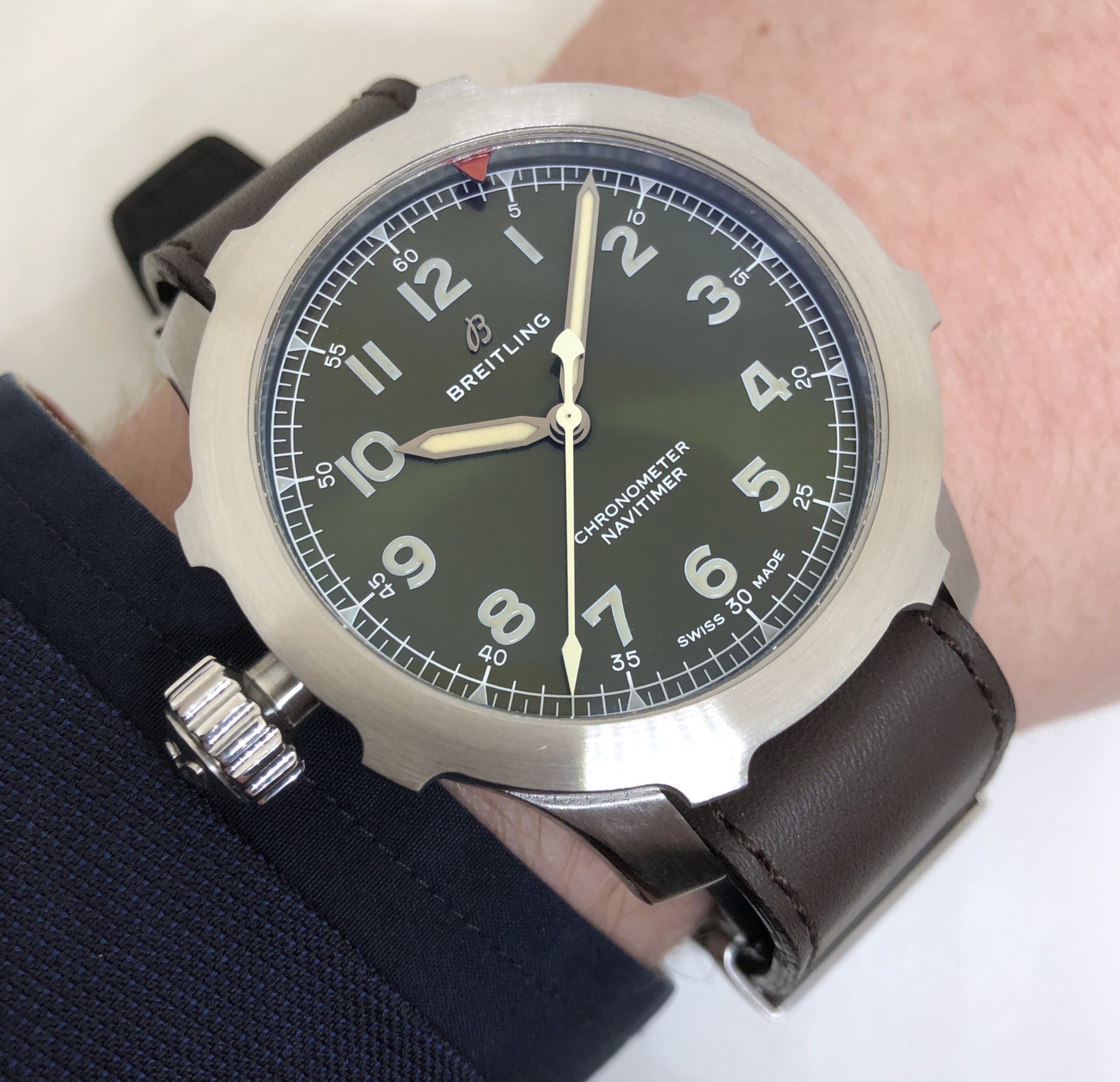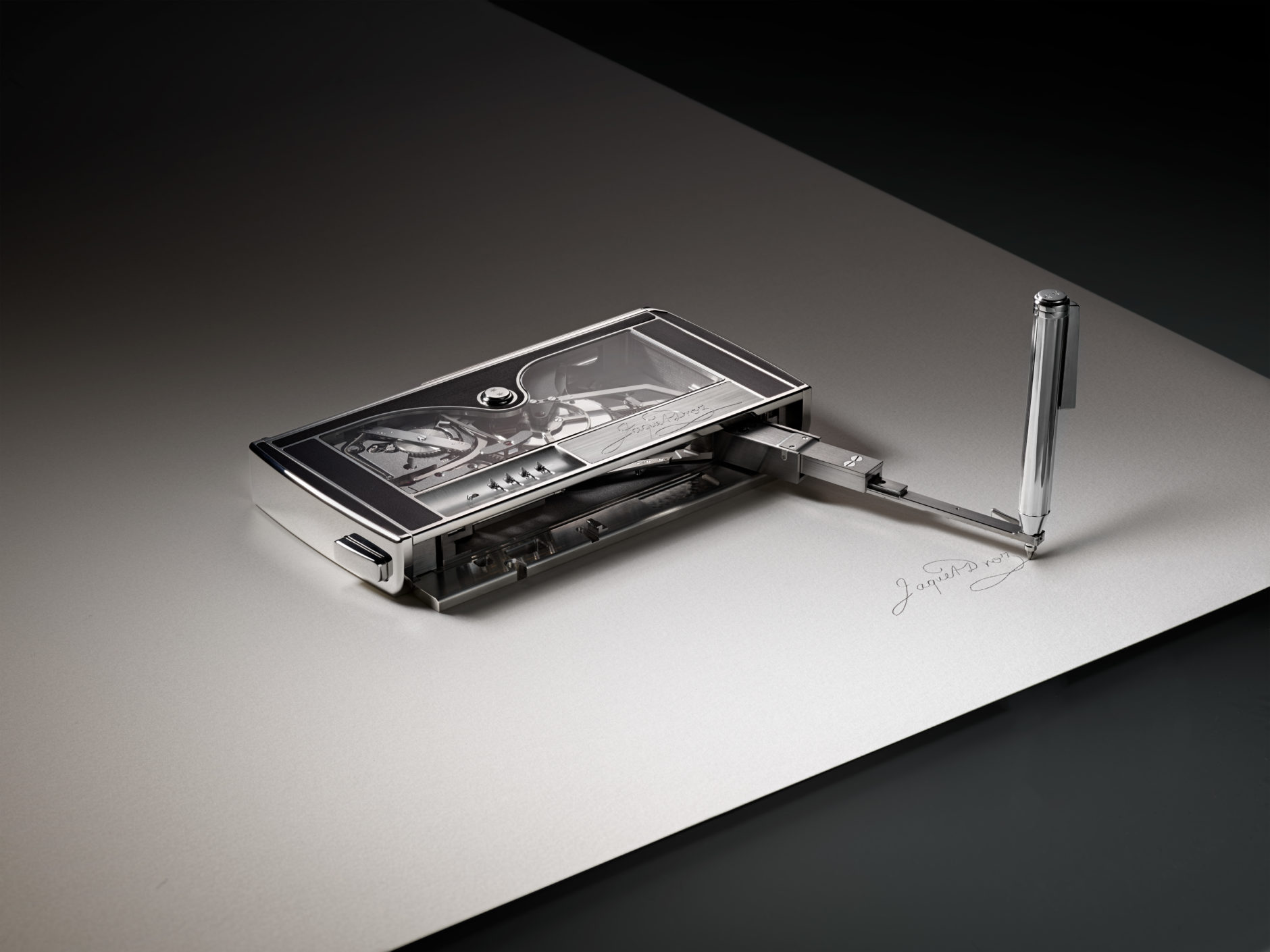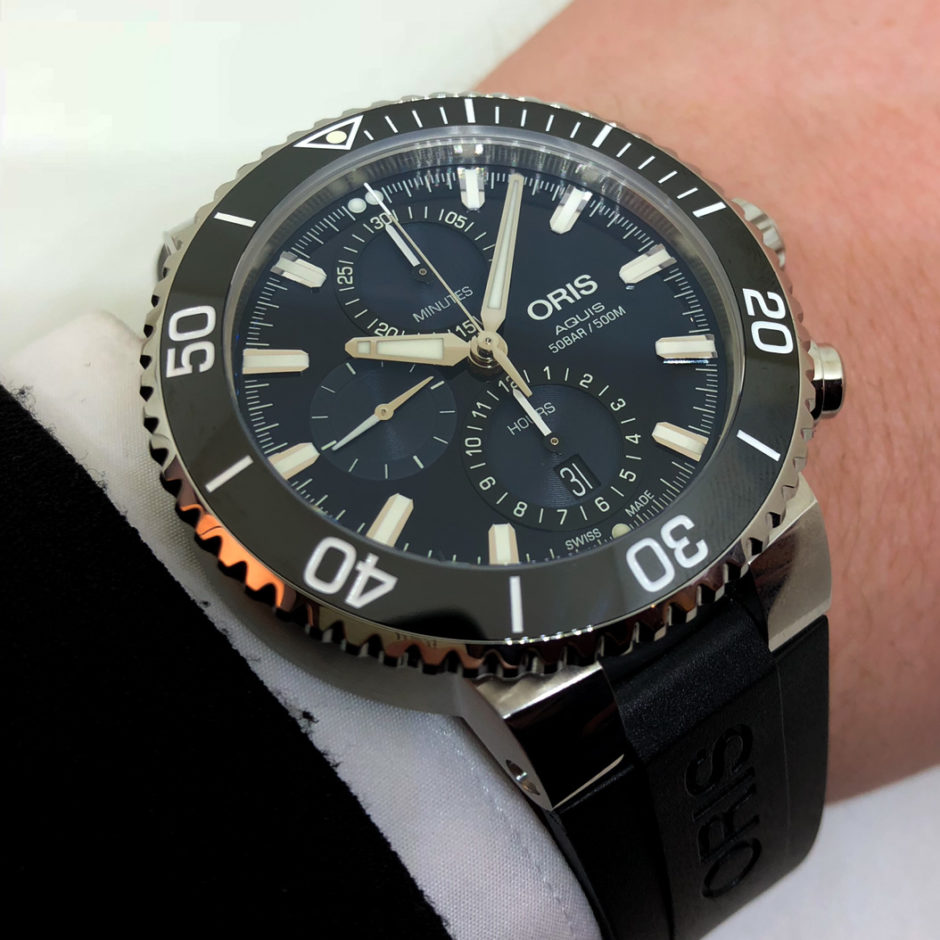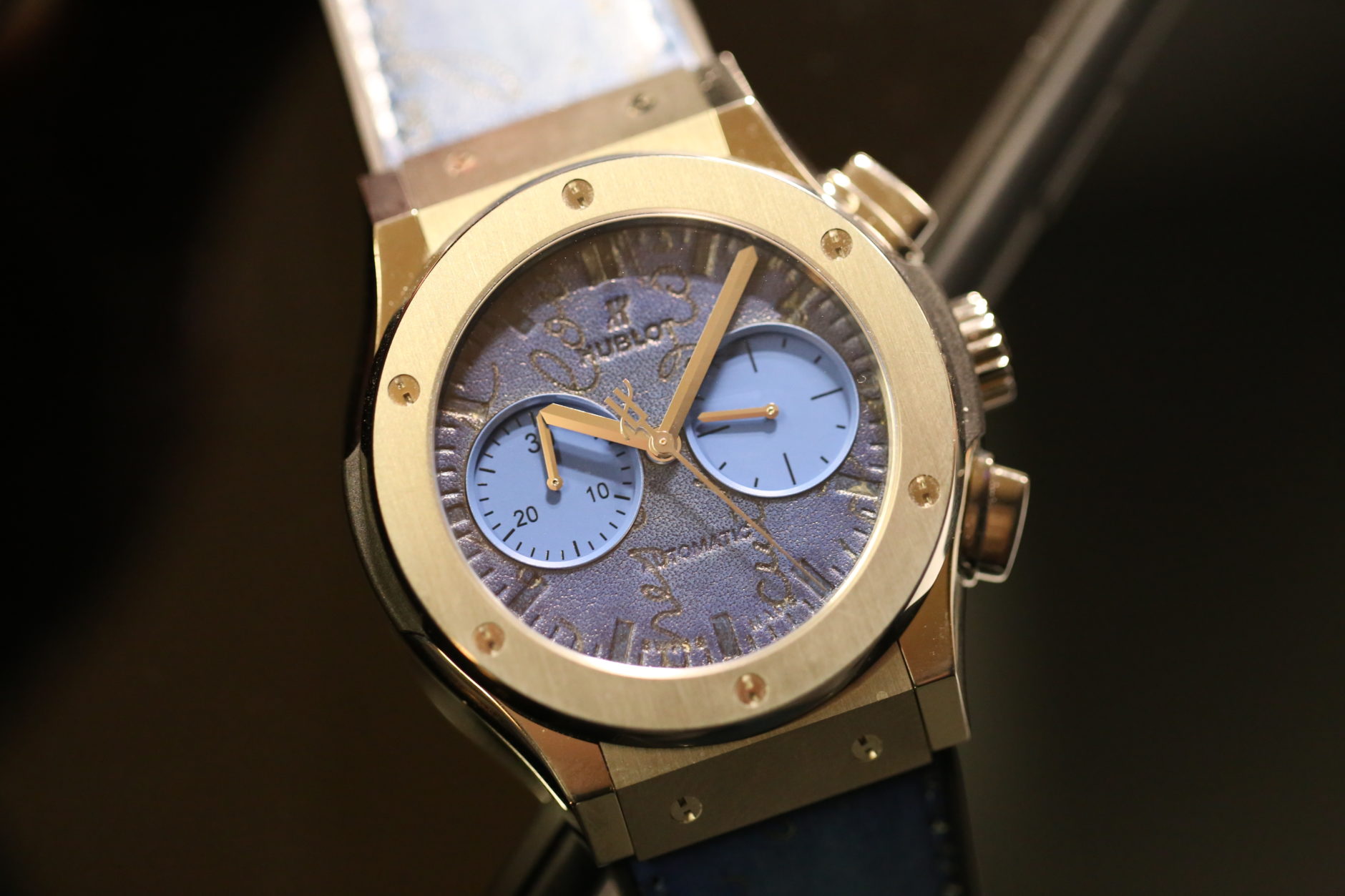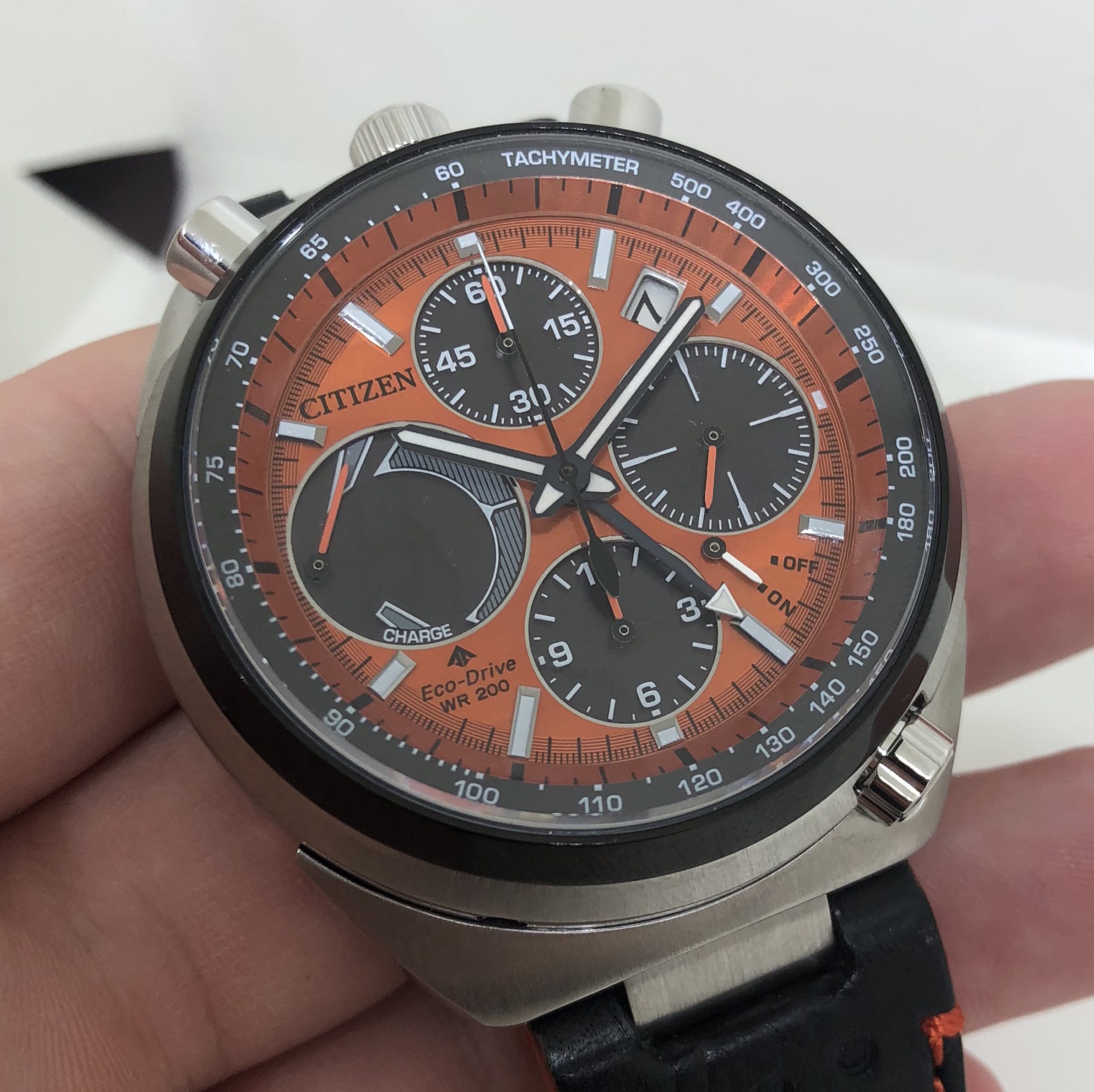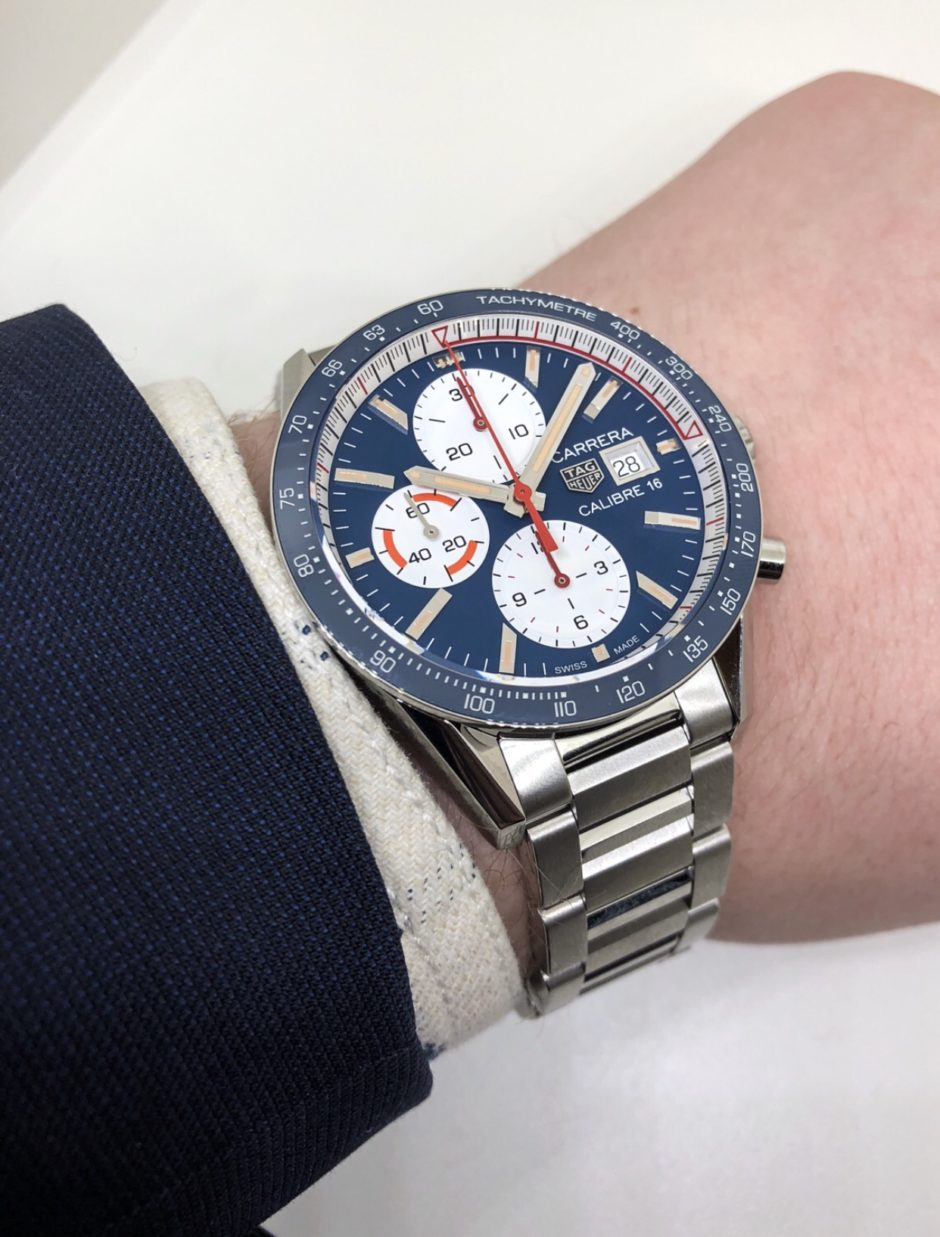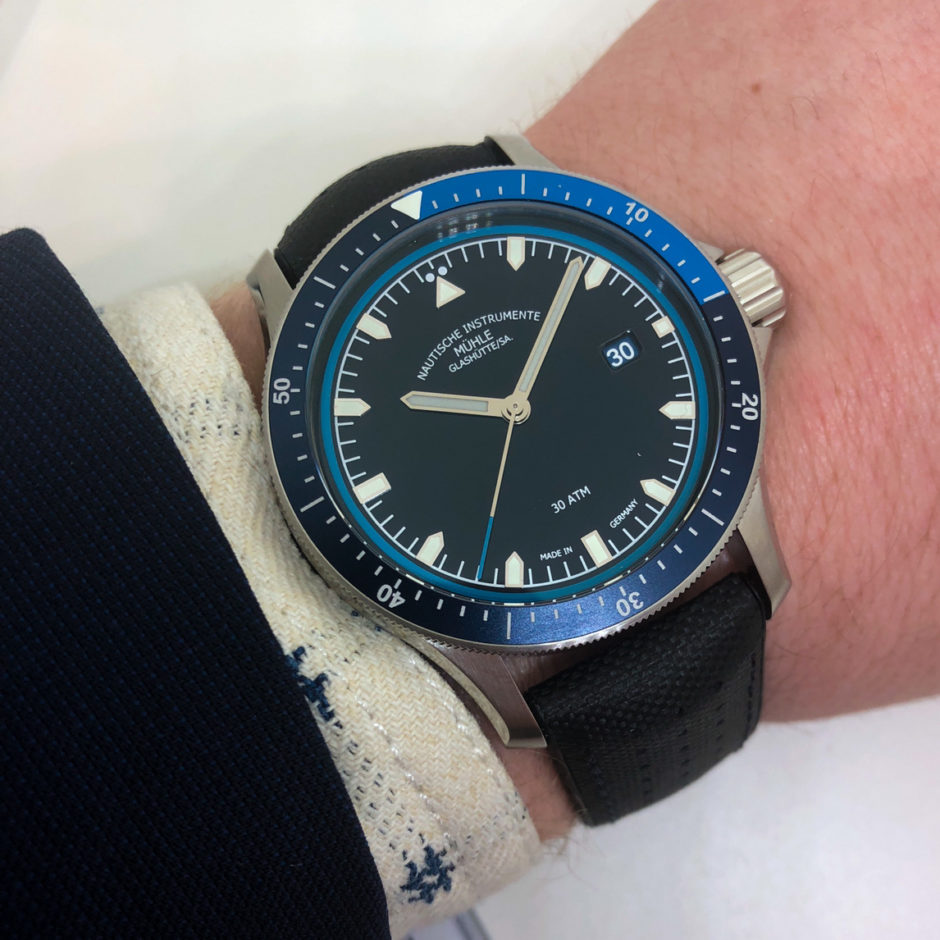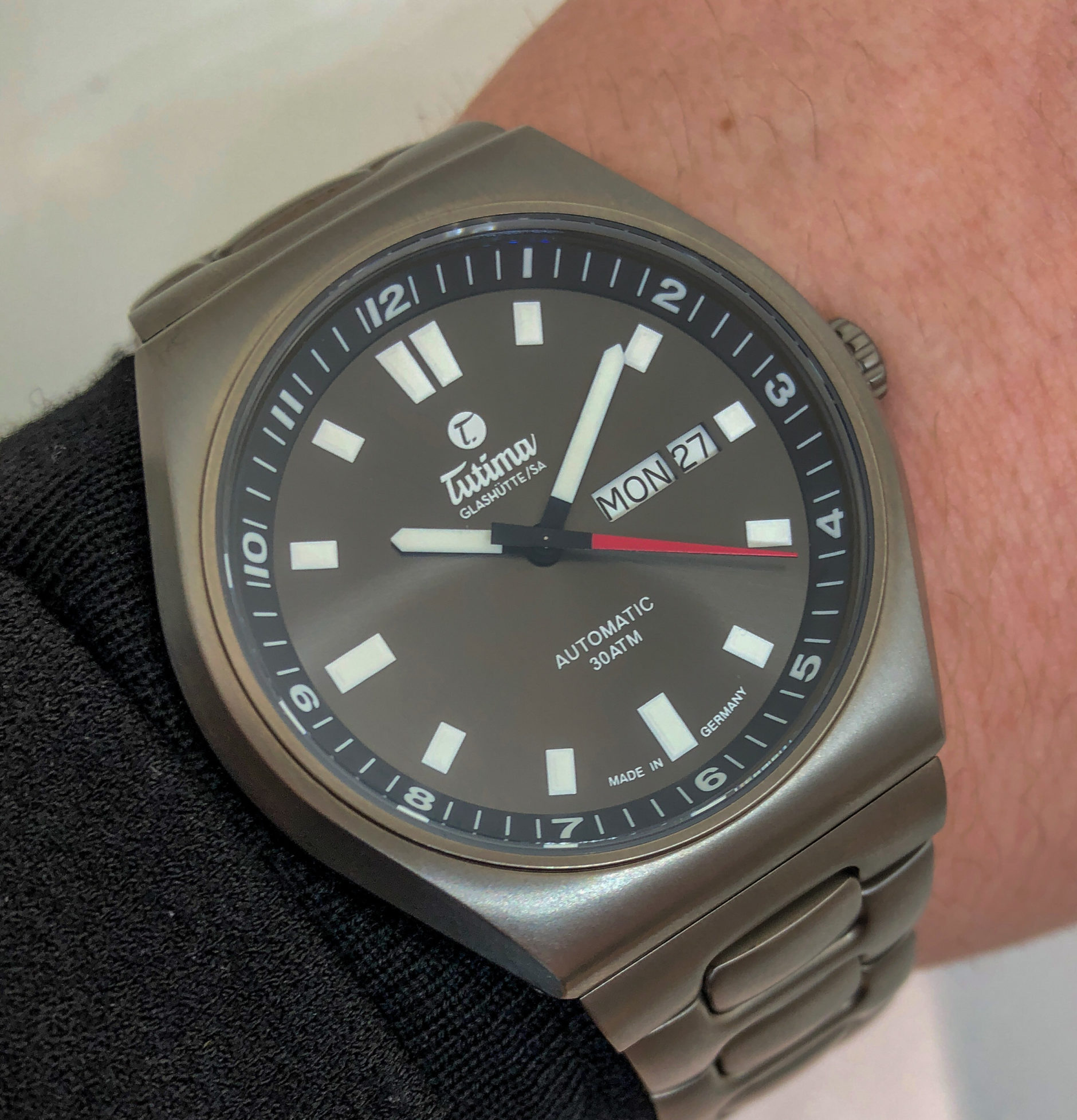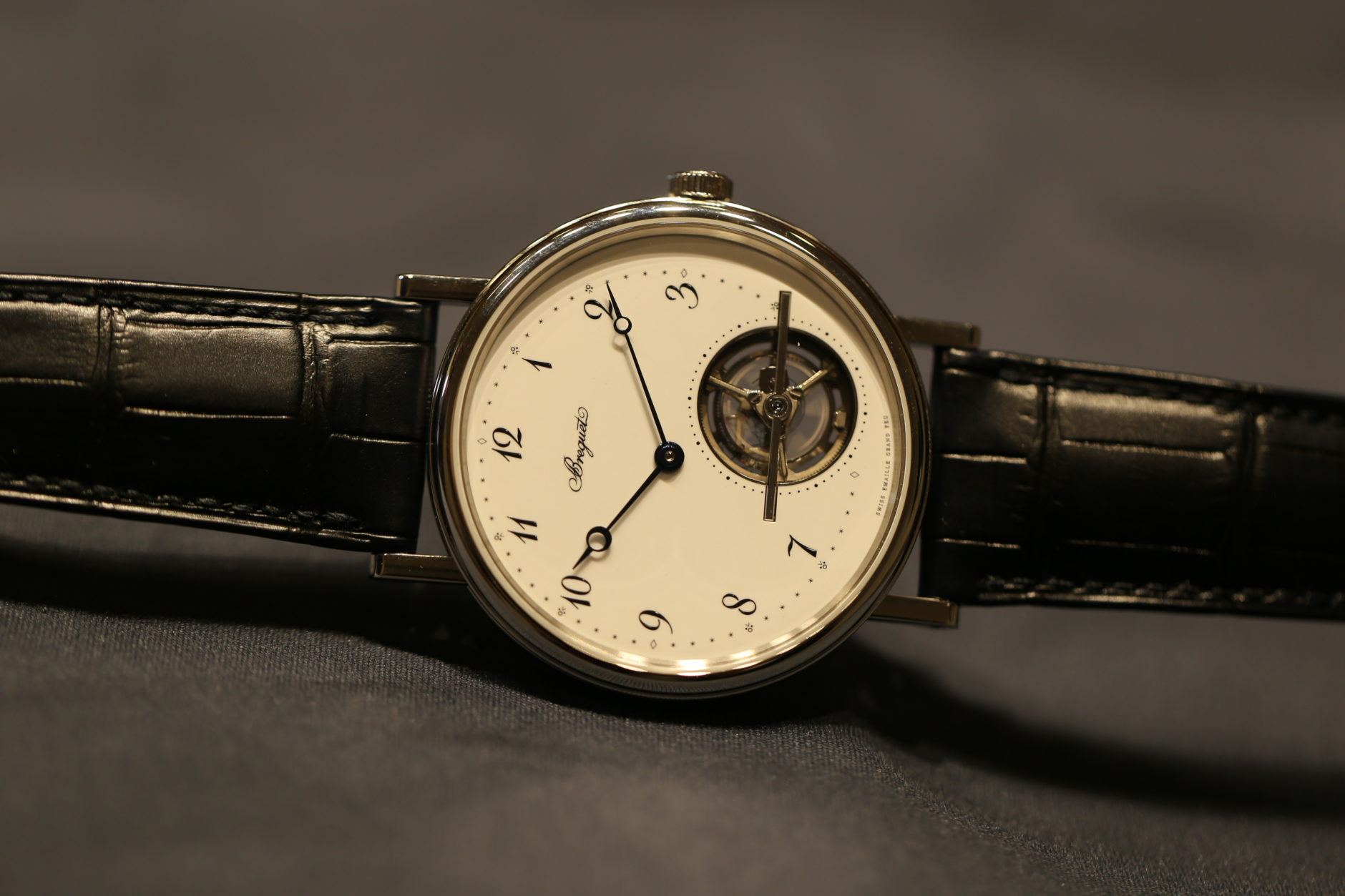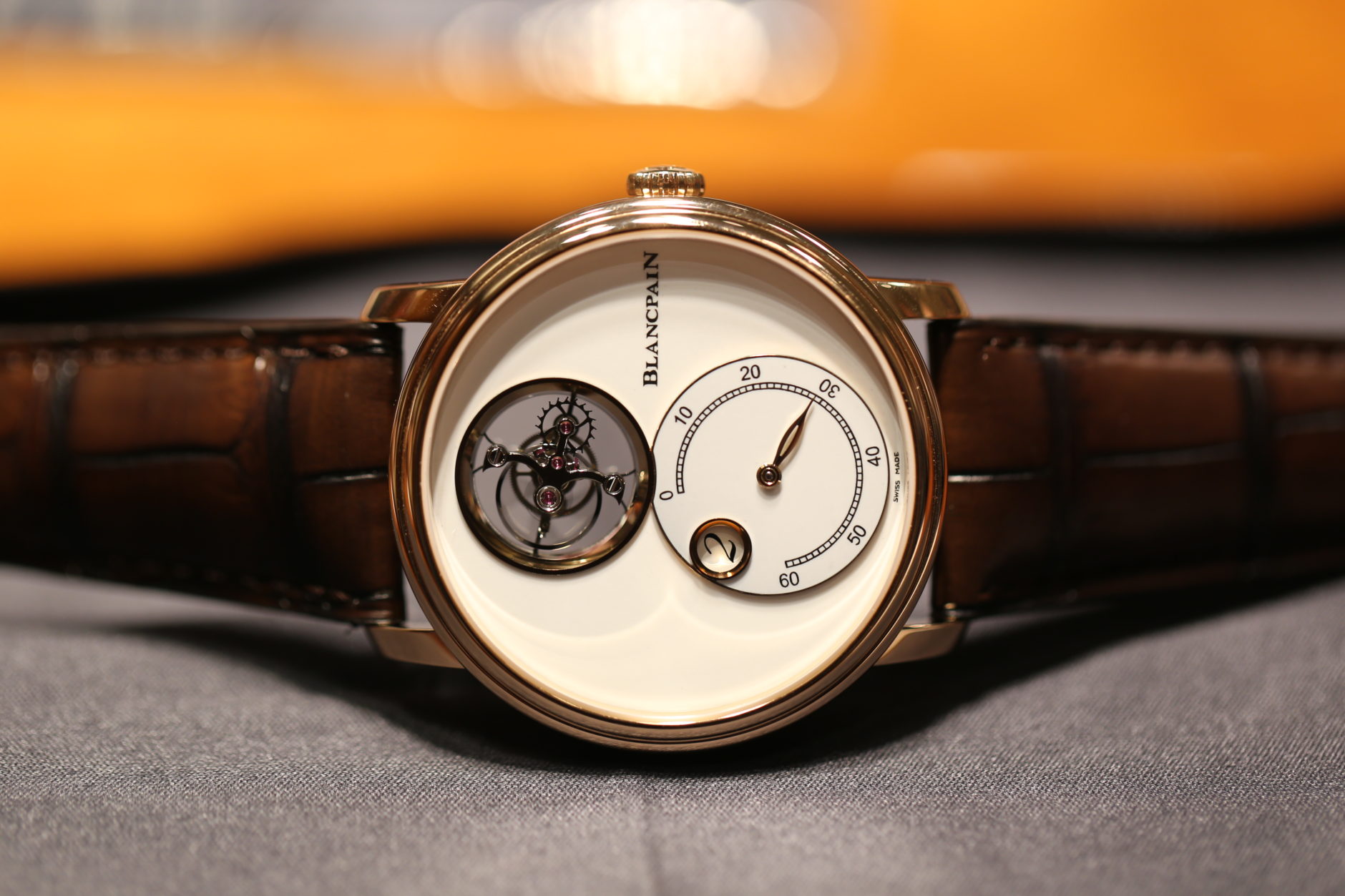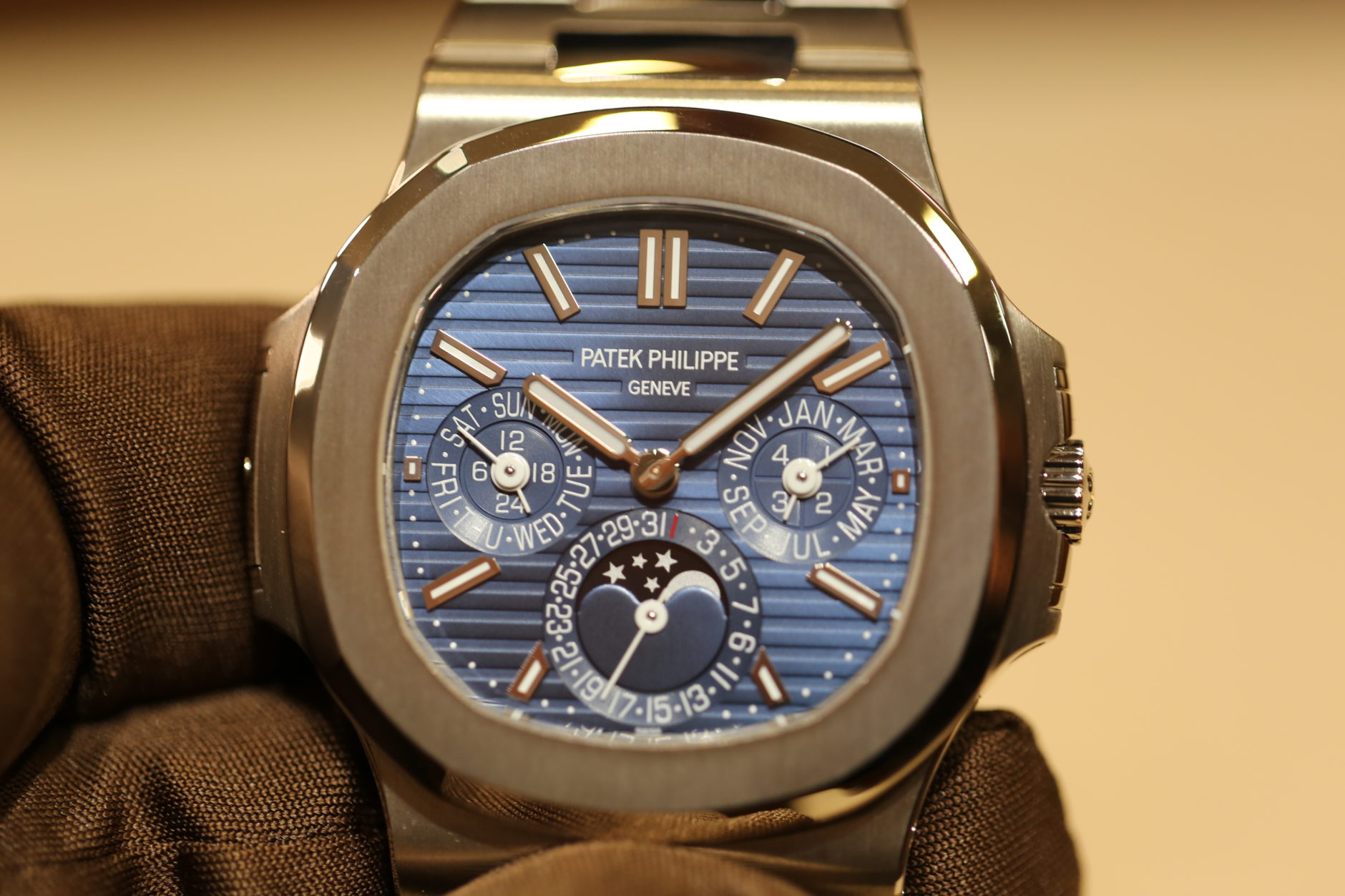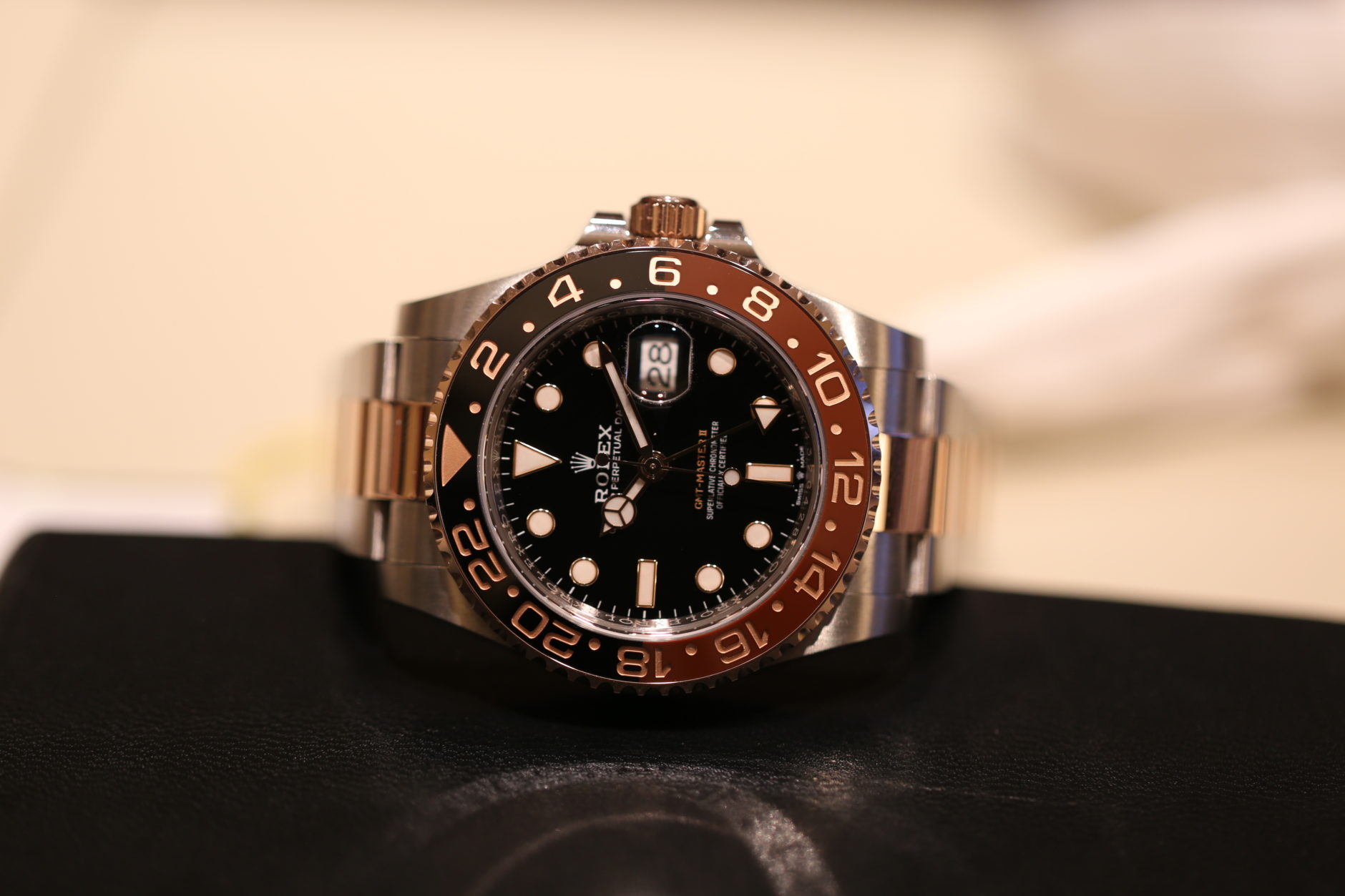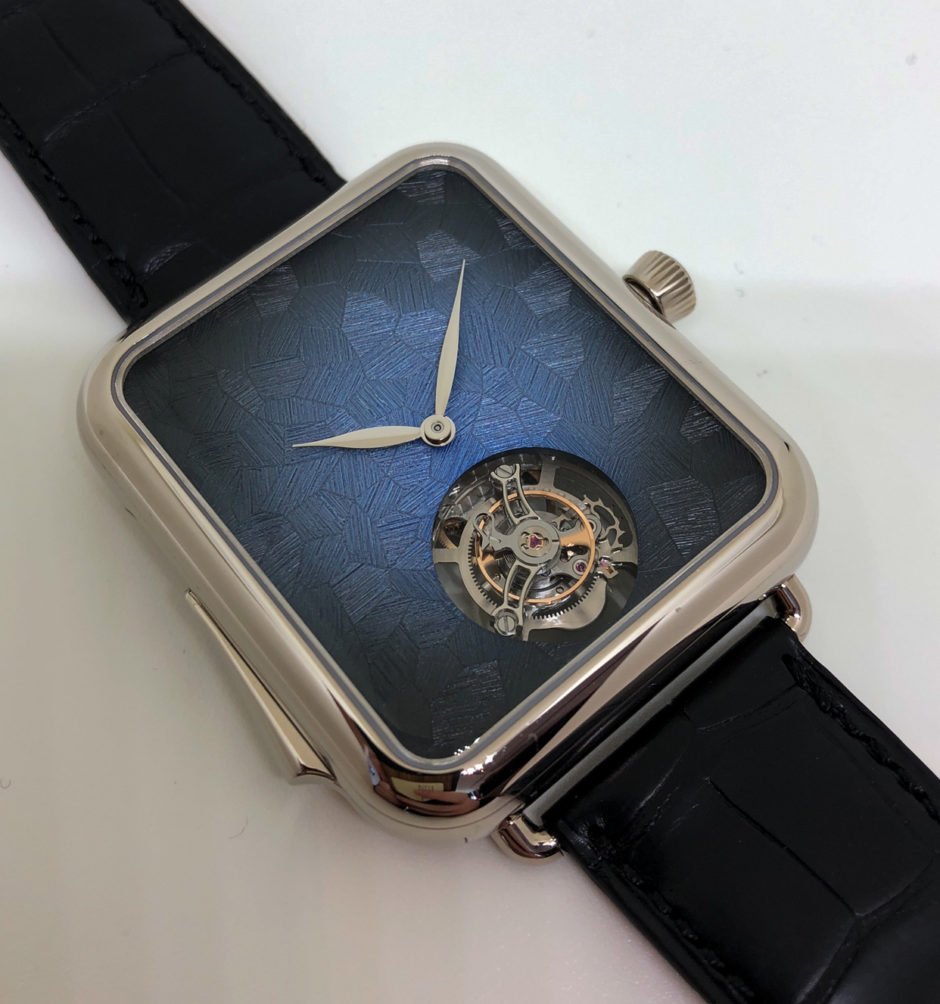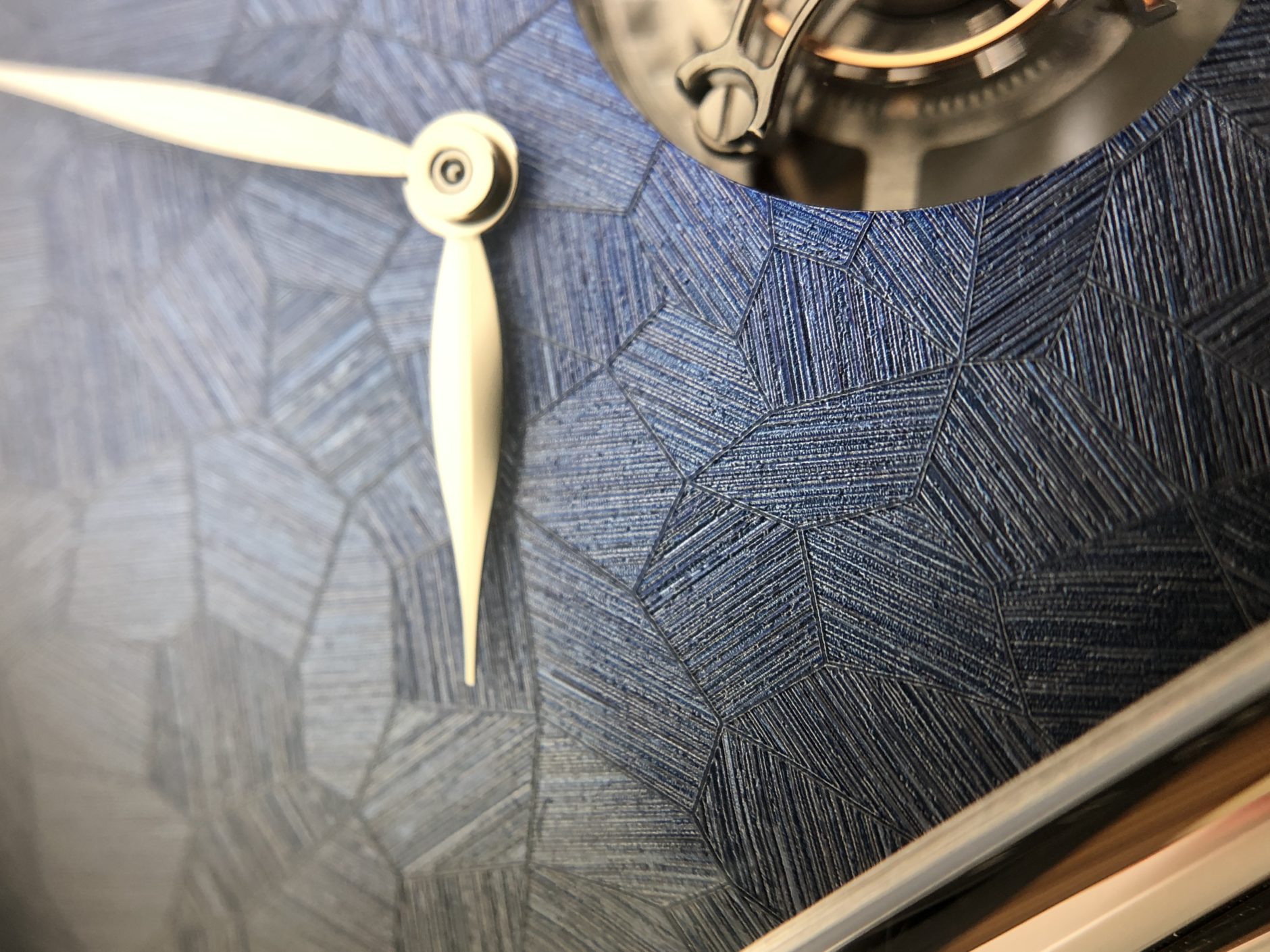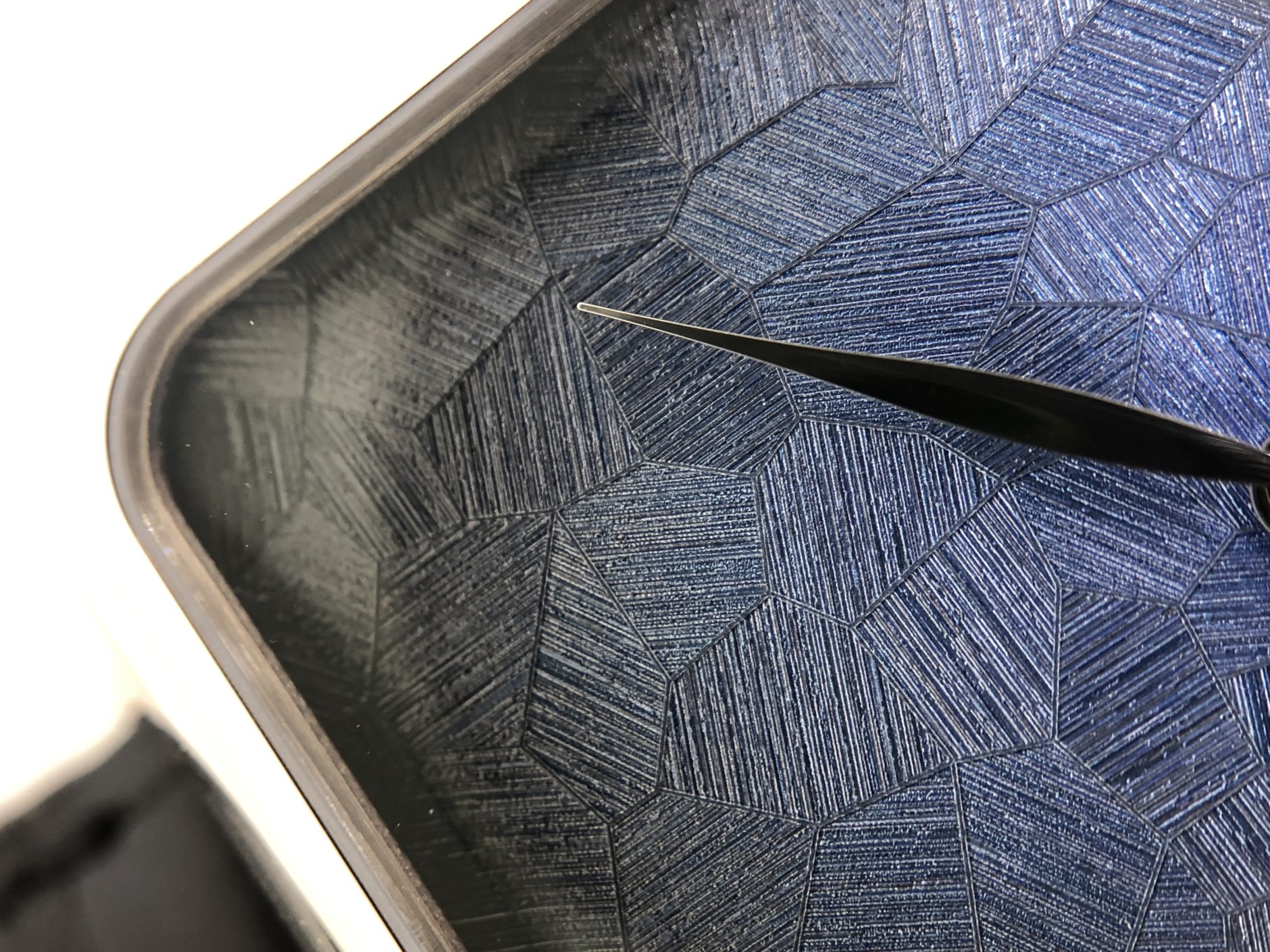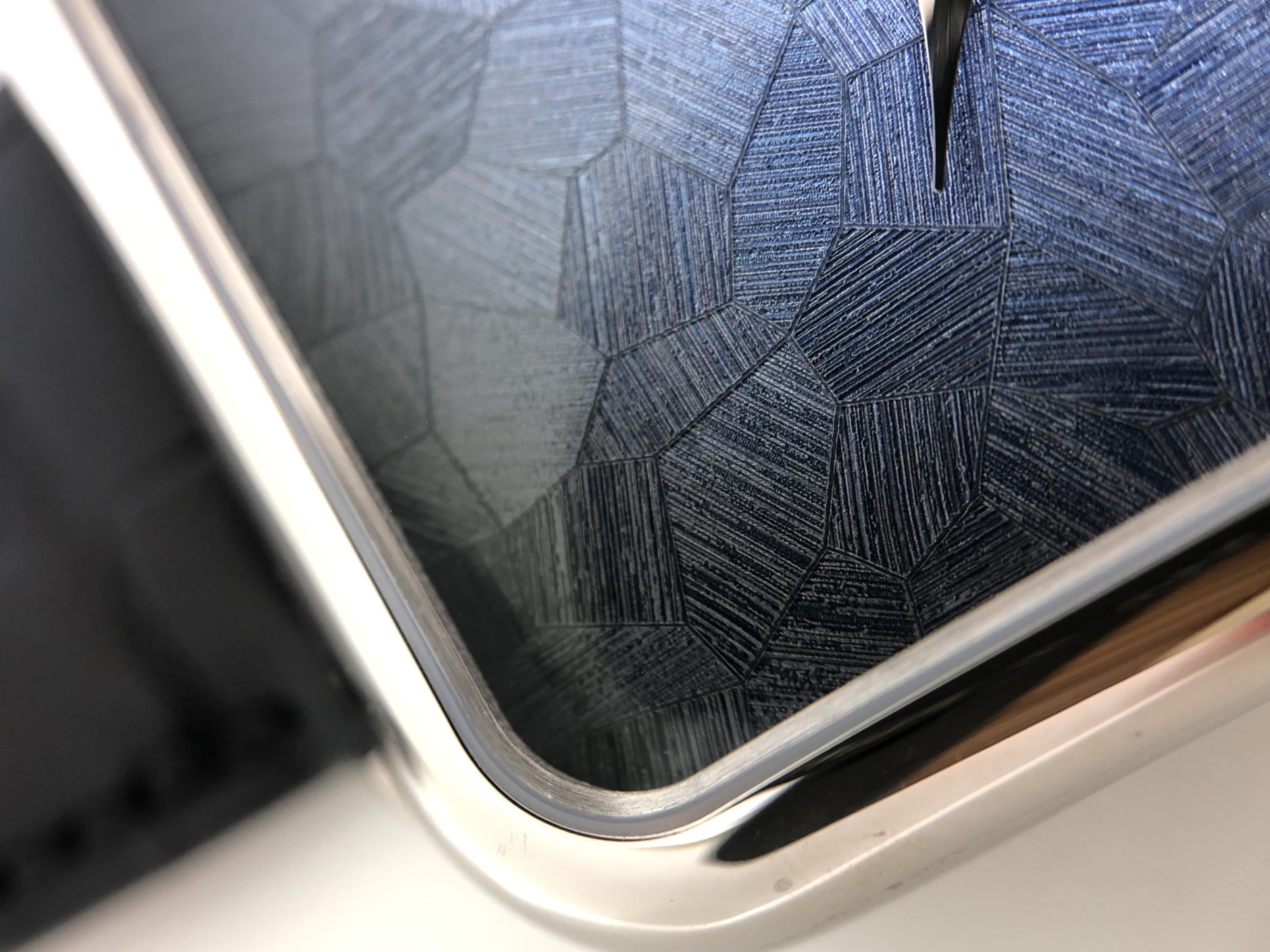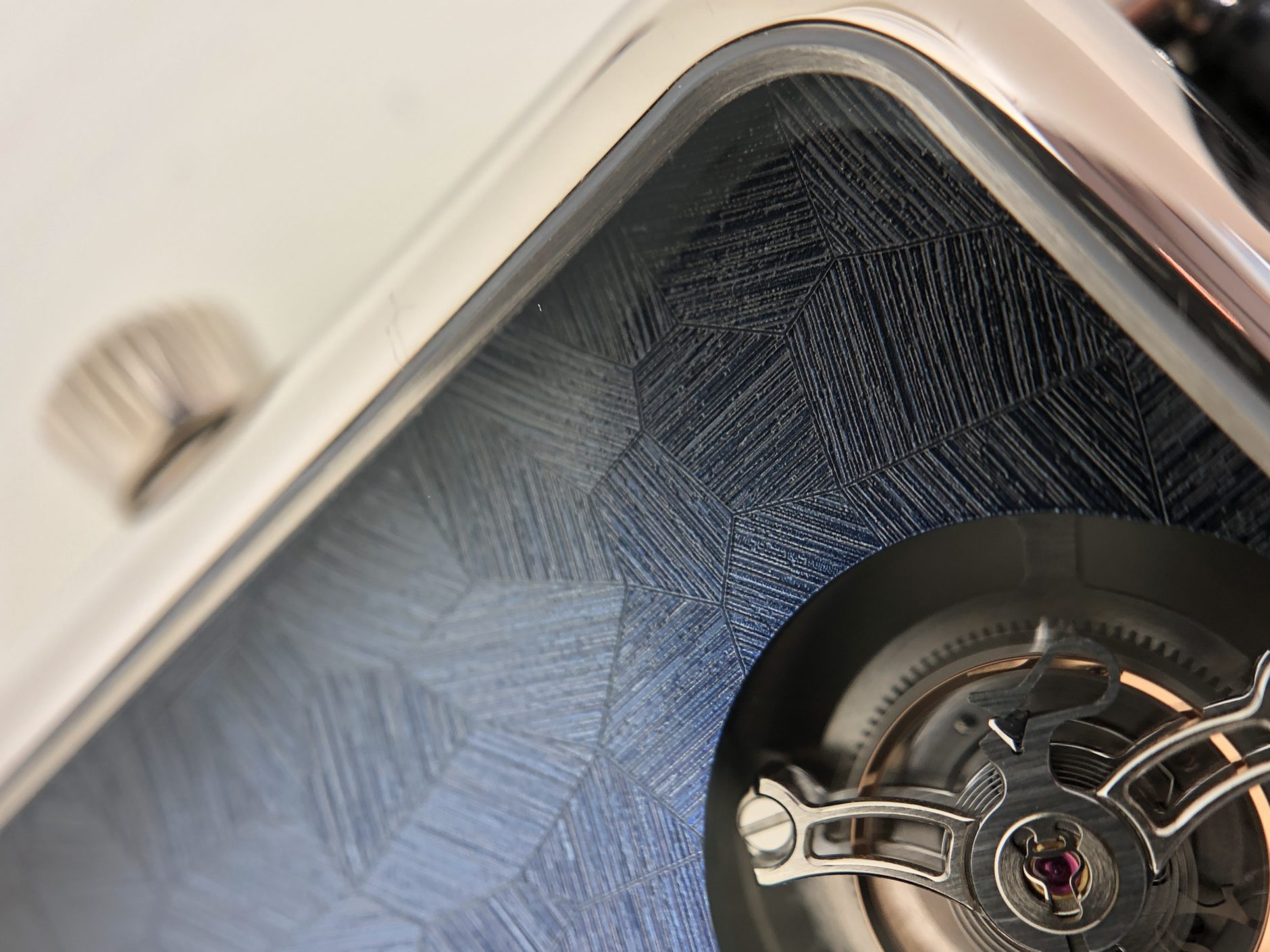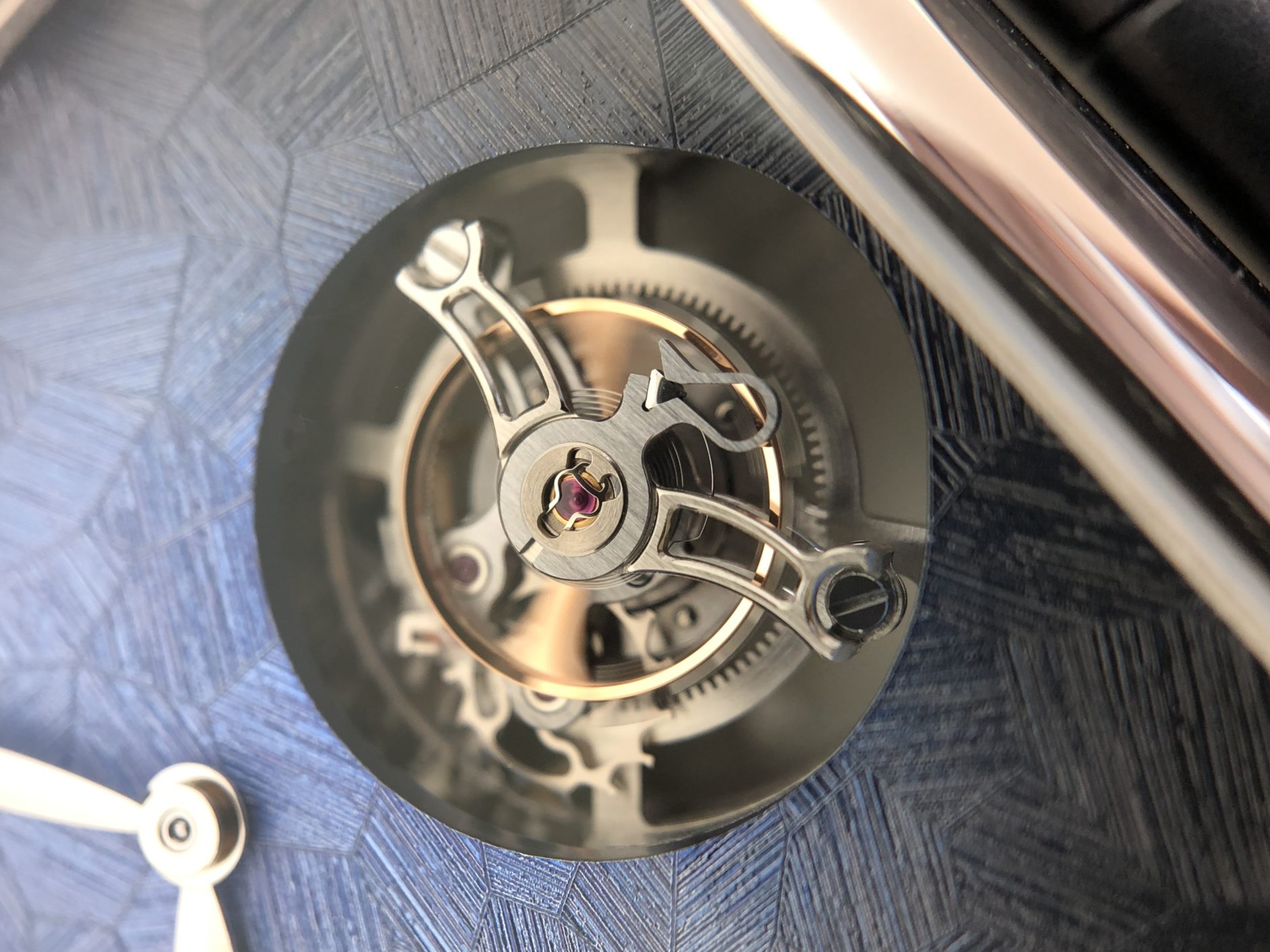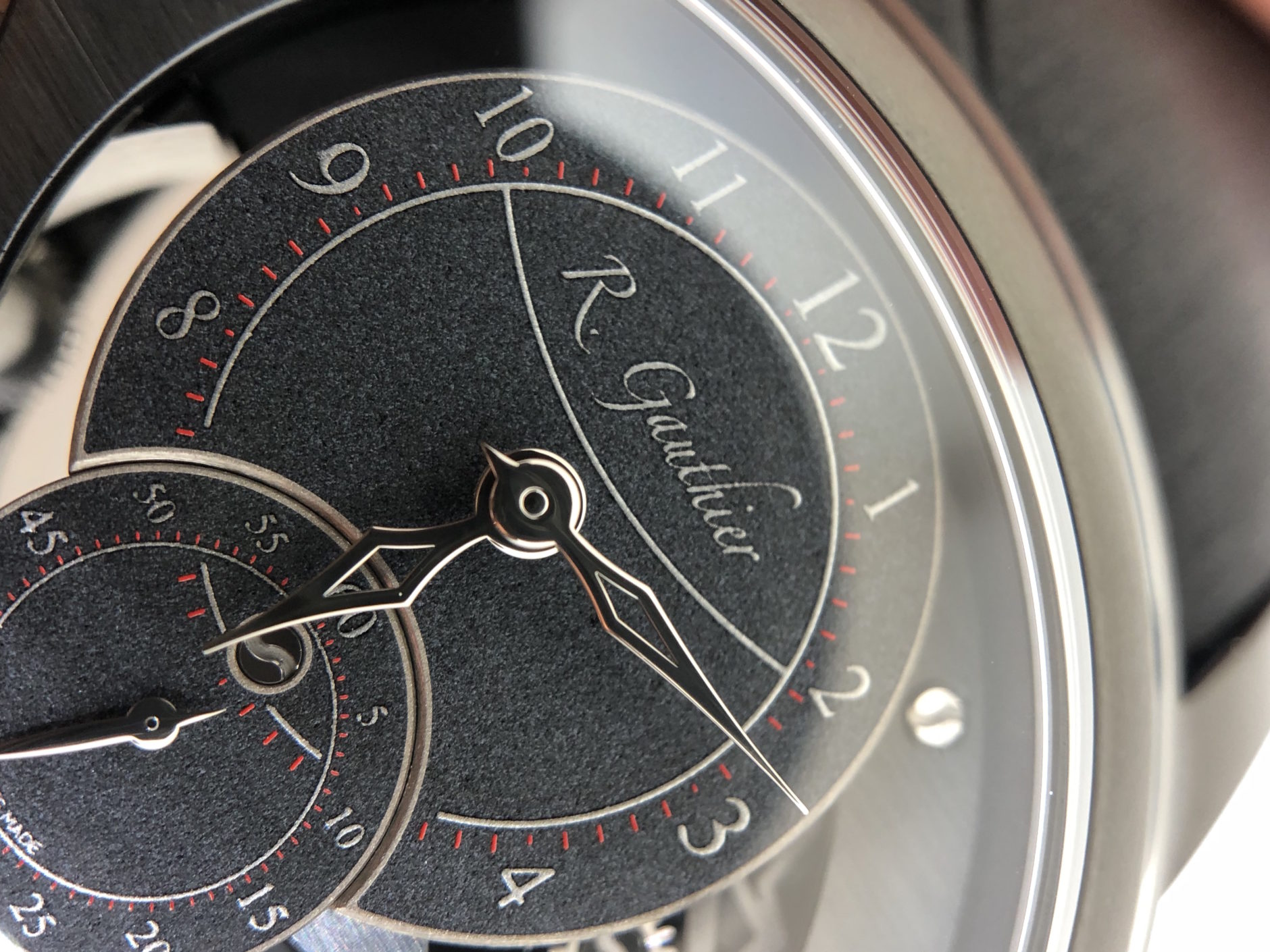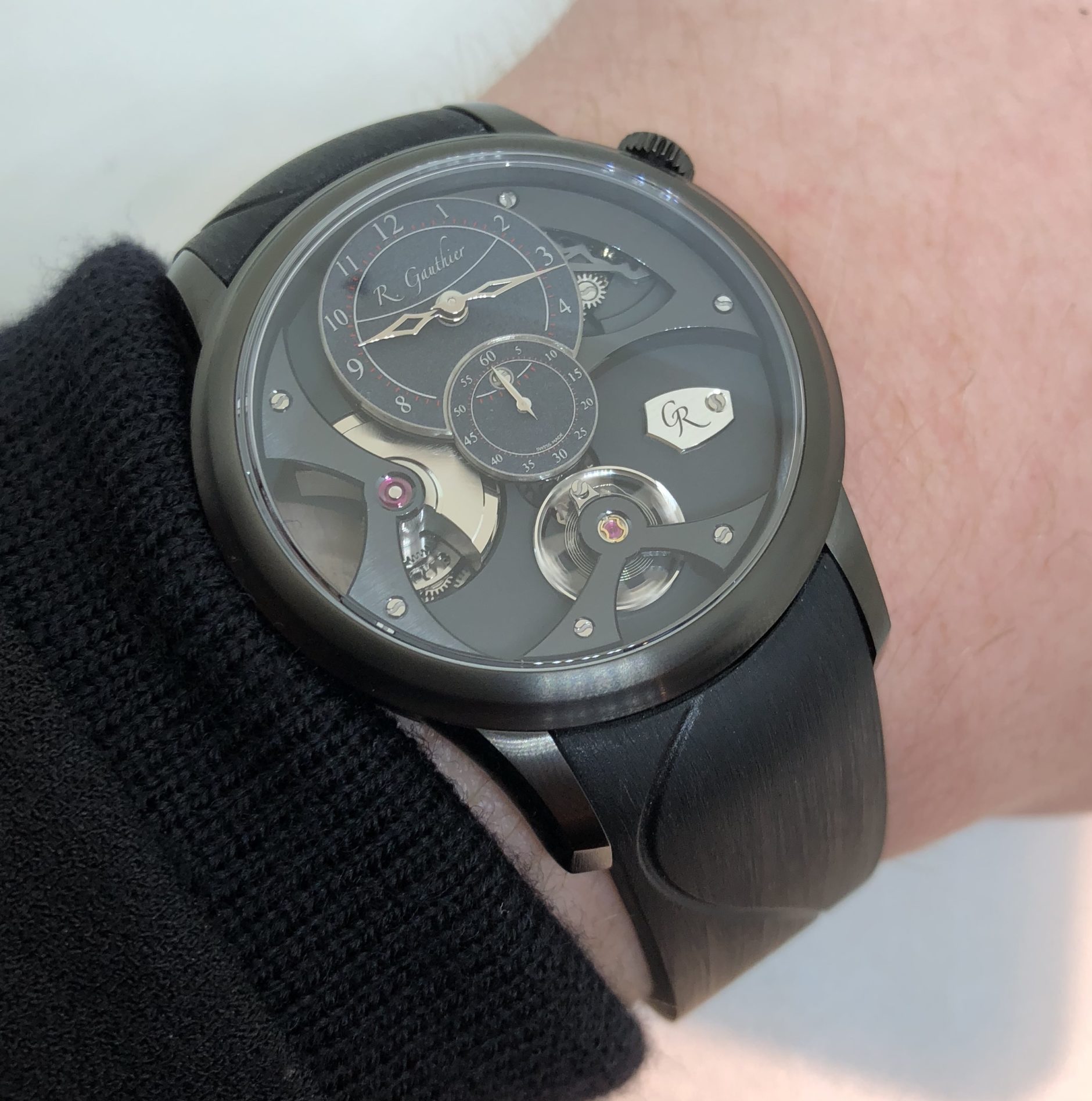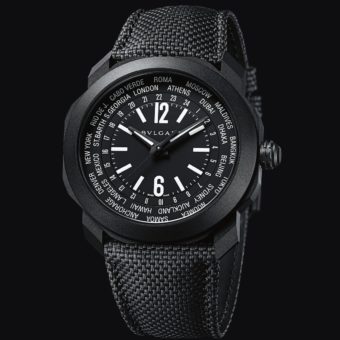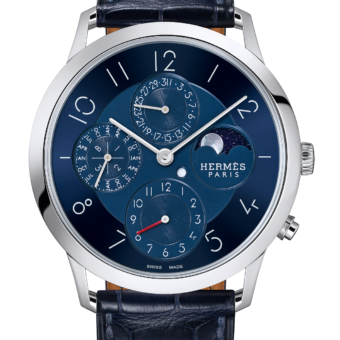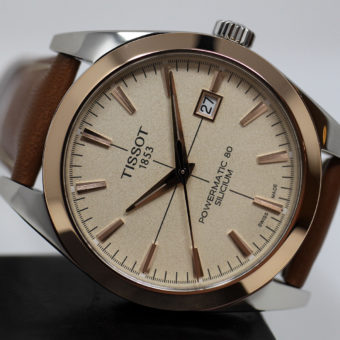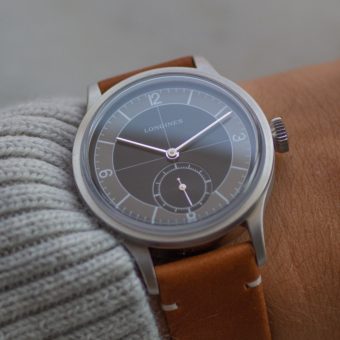Baselworld 2018 may have been significantly smaller than in previous years, but the show certainly made up for it with an exceptional range of new watches, quite a lot of them with much more budget-friendly prices than in previous years (which still cannot be said for the bratwurst stand outside the fair).
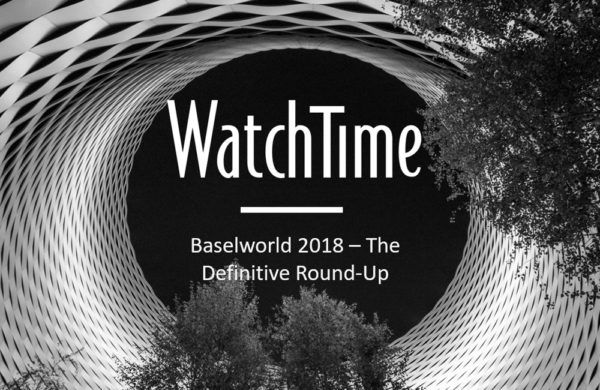
WatchTime’s editorial team spent 315 hours on the ground in Basel, visited 138 brands (50 of which have already been covered here), and is now working on the Baselworld special for one of the upcoming issues of WatchTime magazine. Until then, we’re certain you will appreciate a slightly more personal selection of some of this year’s highlights.
Participating editors: Logan R. Baker (LRB), Mark Bernardo (MB) and Roger Ruegger (RR).
What was this year’s most unexpected release for you?
RR: The Bulgari Octo Finissimo Tourbillon Automatic. Not so much because of the watch itself (after all, Bulgari has already broken several thinness records in the last four years and the design is well established), but because of the timing: In March 2017, Bulgari launched the thinnest automatic wristwatch, in December 2017 the title went to Piaget, and now team Bulgari scored again. For me, that’s as close to watching a horological soccer game as possible. Speaking of which: Hublot’s smartwatch for World Cup Referees also came as a surprise, as well as the new “Autobahn” from Nomos.
MB: To be honest, I was a bit surprised that Tudor, after years of forging its own identity separate from its parent, Rolex, would choose this year to embrace the brands’ shared heritage and launch the Black Bay GMT, with a design heavily influenced by the classic Rolex GMT-Master. Of course, Tudor being Tudor, there was much more to the watch than what we saw at first glance: the bicolor bezel was not the bright “Pepsi” red-and-blue of Rolex’s version but the burgundy and indigo colors that have become closely associated with previous versions of the Tudor Black Bay. Plus, you’ll note the now-familiar Black Bay snowflake hands and the presence of a Tudor in-house movement, Caliber MT5652. The watch works on several levels: if you’re looking for a lower-priced alternative to the GMT-Master, it fills the bill; if you want a new complication with subtle but distinctive Tudor DNA, it fills that bill also. Runner-up: Raymond Weil’s skeletonized version of its Freelancer RW1212, only one year after the release of the original RW1212, the independent Geneva brand’s first exclusive, proprietary movement.
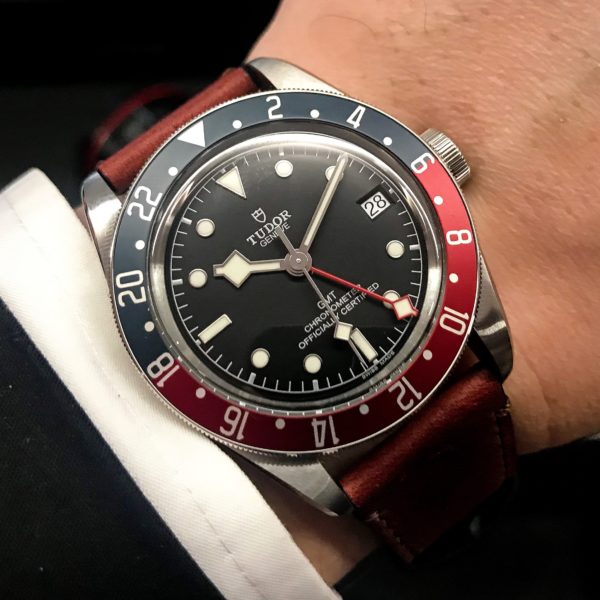
LRB: The Angelus U50 Diver Tourbillon. Usually, skeletonized watches aren’t my cup of tea. Especially ones with a polychromatic look like the latest release from Angelus. Combine that with the fact that a tourbillon inside a dive watch is basically the definition of over-engineering and you wouldn’t have expected the first-ever diver from Angelus to receive the reception it did. However, the surprise here is three-fold. Not only is it impressive that Angelus achieved a depth rating of 300 m for its first dive attempt but to tack on a tourbillon makes a watch of this caliber even more unexpected. (For reference, the MB&F Aquapod with a tourbillon only has a 50 m depth rating.) While the brand has trended towards having a more high-tech/avant-garde presence in recent years, it’s still a surprise given the brand’s highly-collectible and prized vintage models that are mostly comprised of chronographs and field watches. And, to top it off, the price is right too. At right around $30,000, it’s tough to find a comparison for this introduction in today’s market.
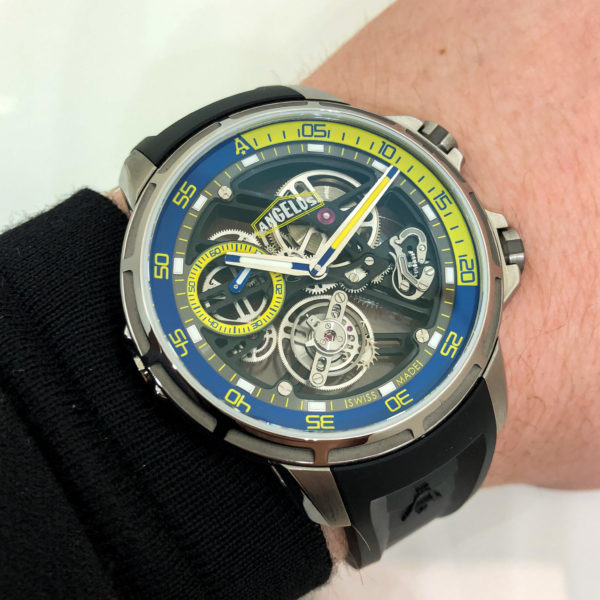
In your opinion, what was the best entry-level watch under $2,000?
RR: That’s a tough one. The usual suspects, brands like Oris, Longines, Tissot, Mido or Certina, all had a lot of attractive watches on display this year; but personally, I immediately fell in love with Bulova’s Snorkel re-issue, a cushion-case dive watch from the ’70s with a 666-foot rating on the dial and a list price of $795 (a watch I owned and should never have sold). The Presage SJE073 from Seiko (with the new 6L35 caliber) and the new Seastar from Tissot are also very promising. Doxa’s Divingstar “Poseidon Edition” is definitely a candidate too, but might technically not qualify after the pre-order phase, same with the Longines Legend Diver Black PVD that could end up slightly above the price required to be listed in this category.
MB: As always at Baselworld, there were a lot of anniversaries being commemorated — Omega Seamaster’s 70th, TAG Heuer Carrera’s 55th, Chronoswiss’s 35th— but a major one that has been largely under the radar is Mido’s 100th anniversary, which the brand is celebrating with a number of special releases. The most noteworthy of these is the Mido Baroncelli Trilogy, three limited editions that are imagined to represent the brand’s past (1918), present (2018), and future (2118). The Baroncelli 1918 is a small-seconds watch with a rose-gold PVD case, a brown leather strap, and an ivory enamel dial that evokes early Mido watches. The 2018 model is in a polished stainless steel case with a steel bracelet. The “futuristic” 2118 has a black PVD-treated steel case, a light-catching sunray dial in anthracite gray, a Bordeaux red seconds hand, and a Cordura fabric strap. They’re all limited editions, all powered by automatic ETA movements, and all priced well under $2,000 (from $1,200 to $1,260).
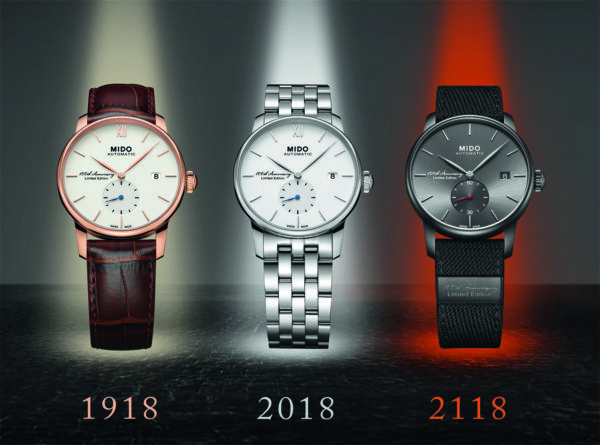
LRB: Like Roger and Mark pointed out, this is where the more accessible Swatch Group brands excelled. Longines, Tissot, and Mido all put out tempting value propositions but it was hard for me to stay away from the Hamilton booth during this year’s show. The model that kept drawing me back? The new Khaki Field Mechanical 38 mm. It’s a great vintage-inspired re-edition that has a good chance of becoming my standard answer to when my less horologically-inclined friends ask for a good affordable watch recommendation. And, at only $475, I might end up picking one (or two) myself.
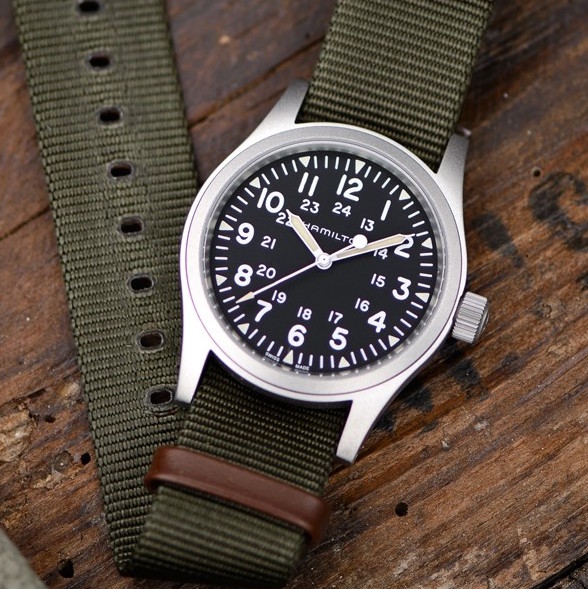
What was the most exciting new release for you?
RR: The Omega Seamaster 1948 Limited Edition (small seconds) certainly qualifies, Carl F. Bucherer did a fantastic job with the Manero Tourbillon Double Peripheral, Hublot’s collaboration with Richard Orlinski added a new dimension to the Big Bang collection and, of course, Rolex did pretty much everything right with bringing the “Pepsi” GMT Master II back in stainless steel. I was also positively surprised by the Bulgari Octo Automatic in steel and rose gold.
MB: I had seen pictures and video of Hublot’s Big Bang Sapphire Tourbillon long before I actually sat down for my Hublot appointment and held it in my hands, so this watch had pretty much made the list before I had ever seen it in the person (not “in the metal” as there is very little metal on display here). While still somewhat rare, sapphire-cased watches have been around for a few years now, with Hublot being the first to release one in a large-scale production series, but leave it to the audacious “Art of Fusion” brand to take it to another level, with not only transparency in the 45-mm case (cut from a single block of durable sapphire) and rubber strap but also in the major elements of the skeletonized tourbillon movement, including a strip of sapphire serving as the tourbillon bridge and clear “high-tech polycarbonate” used for bridges and plates. The overall effect is quite stunning, and the movement itself is technically sound, boasting a 115-hour power reserve. Right on this model’s heels was the Chopard All-in-One, which manages to cram 14 functions onto two dials and make both of them look stunningly elegant.
LRB: I was thoroughly impressed with what Zenith had to offer this year. While the continuation of the Defy Collection is certainly something to pay attention to, there was a certain trend to the new models that really excited me. This year, none of the watches in Zenith’s lineup come in stainless steel. All the models branch out into something different, something exciting. There’s a lustful white ceramic found in the Swizz Beatz collaboration, bronze in the new pilots’ models, and titanium timepieces abound. I would also say it was great to see Breitling continue to flesh out its new look, and the fact that it isn’t totally abandoning the extra-large aesthetic of the past decade plus a positive for its longtime supporters. Jaquet Droz deserves a special shoutout as well for introducing a new writing automaton during the show.
What timepiece released during the fair are you most likely to purchase this year?
RR: I am trying very hard to convince myself not to go after the new Blancpain Fifty Fathoms Bathyscaphe Day Date 70s and the Seiko 6159 re-issue. I am already 99% sure that I will get the Bulova Snorkel as soon as it’s available.
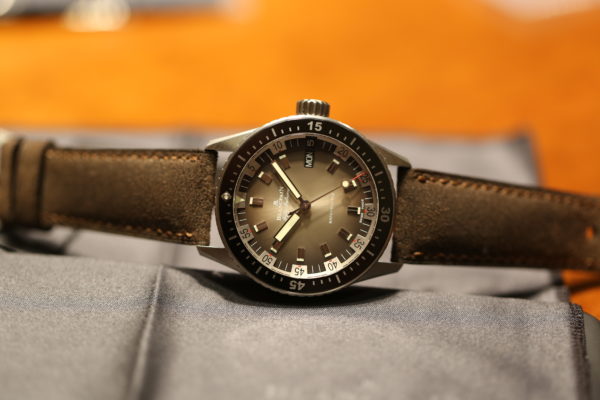
MB: Oris is a brand that I usually walk away from my Baselworld appointment and think, “Man, I should really open the wallet and get me one of those” about at least one of its new models, and this year was no exception, as I took an immediate liking to the new Aquis Chronograph — actually the first chrono in the Aquis collection, Oris says, outfitted with a reliable Sellita automatic movement — and its very attractive price tag under $4,000. If I happen to hit the lottery this year (or one of my books earns much more royalties than I expect), I would move heaven and earth to acquire one of Hublot’s Berlutti editions with the sumptuous leather dials, probably the burgundy one. These are definitely “novelties” in the traditional sense of the word and, like many Hublots, probably a love-‘em-or-hate-‘em proposition, but count me firmly in the “love” category.
LRB: I’ve long flirted with the idea of picking up a vintage Citizen bullhead chronograph from the 1970s, so there’s a strong chance I’ll end up with one of the new models. Other than that, I truly enjoyed the back-to-basics Carrera Caliber 16 Chronograph from TAG Heuer. It’s just an extremely attractive timepiece that has been stuck in the back of my mind since leaving Basel. Finally, the Mühle Glashütte ProMare Go is a really exciting introduction from one of my favorite German brands. It’s water resistant to 300 m, has a bi-directional rotating bezel, and a positively gorgeous combination of blues on the dial and bezel that made it hard to walk away from with my wallet intact. The Tutima Glashütte M2 Coastline also left me with a similar feeling.
If you had unlimited funds, what watch would you purchase?
RR: The Breguet Classique Tourbillon Extra-Plat Automatique with a Grand Feu enamel dial and Blancpain’s Villeret Tourbillon Volant Heure Sautante Minute Rétrograde both qualify. Laurent Ferrier’s Minute Repeater should also be on the list, but the brand wasn’t officially exhibiting in Basel which makes room for Patek’s Ref. 5740/1G.
MB: Even the most basic three-hand version of the Patek Philippe Nautilus is a grail watch for many of us, and Patek has been adding more complicated versions over the years, all of which have stayed true to the original now-iconic design. This year, the brand pulled out the big guns, adding a perpetual calendar to the sport-luxury collection, and it’s a beauty. It’s also, somewhat surprisingly, the thinnest quantième perpetuel in Patek’s entire portfolio. Despite the very busy dial, the watch (Ref. 5740/1G) is still unmistakably a Nautilus, albeit one at the absolute pinnacle (price and complication) of the series. Slightly more attainable, and my favorite of the new Rolex releases despite its being somewhat overshadowed by the Oystersteel “Pepsi” version, is the new GMT-Master II in Everose Gold with the black-and-brown “root beer” bezel. I’ve always preferred root beer to Pepsi, so I guess that follows.
LRB: Two pieces immediately come to mind for me. The H. Moser Swiss Alp Watch Minute Repeater Tourbillon and the Romain Gauthier Insight Micro-Rotor in titanium. First off, this one-of-a-kind Moser is unlike any watch I’ve seen before. The dial was described to me as featuring “fumé marquetry,” which combines two stunning techniques into one blue dial. Being able to look at the dial through a loupe and see how it gradually grows darker moving outwards from the center and seeing each marking up close was like experiencing a horological dream sequence (check out the macro shots in the slideshow below). I was so captivated by the dial that I almost forgot it boasts both a minute repeater and a tourbillon. Given it’s a unique piece, I was even told it had been sold the day before, I’m sure that will be both the first, and the last, time I’ll have a chance to see it in the metal. On the other hand, the latest update to Romain Gauthier‘s Insight Micro-Rotor scales down the weight of the watch making it imminently wearable. The all-black look is definitely distinct and after wearing it for a few minutes I can say that it would make an ideal daily wearer, which is really saying something considering how mechanically impressive (and expensive) it is.
What was your best interview or presentation experience?
RR: Blancpain certainly did a very smart thing by letting a collector like Jeff Kingston present the novelties. But the presentations with Bulgari, Bell & Ross, and Sinn are also annual highlights I wouldn’t want to miss.
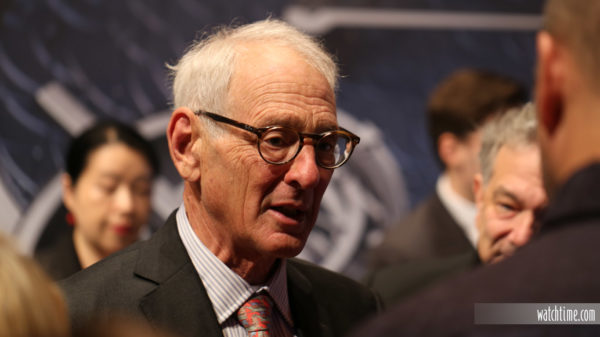
MB: Many brands and presenters did a great job, as per usual, of introducing us media folks to their novelties, but this year’s standout was my meeting with Casio/G-Shock, in which I actually had the opportunity to hear from, and ask questions of, the actual R&D team from the brand’s Tokyo HQ that were the brain trust behind such standout watches as the MR-G, the G-Shock Full Metal, and the new G-Shock Gravity Master. Thanks is also due to Glashütte Original, which offered me the opportunity to interview, over German beers, its charismatic CEO, Thomas Meier, and Hublot (those guys again), which arranged a sit-down with cigar icon Carlito Fuente.
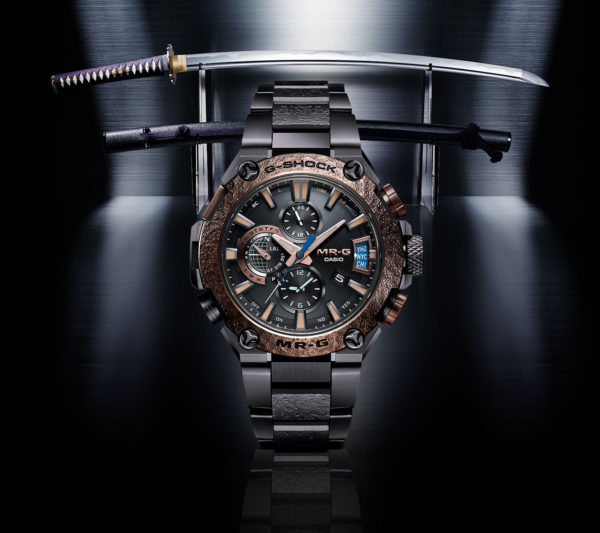
LRB: I had the opportunity to interview Jean-Claude Biver and George Bamford in back-to-back sessions during the fair which was a fascinating experience. Equally animated in conversation, it was a definite treat to speak with a man who has helped make the watch industry what it is today in Biver and with someone who finally received his first real sign of acceptance into the sphere of horological titans with Bamford. Hearing stories from Biver’s past compared with the giddiness Bamford showed at having the opportunity to work with TAG Heuer and Zenith (he compared himself to a child in a candy store more than once in our 30-minute chat) was a joy. It also helped me understand the personalization ethos that Bamford has sought to popularize over the past decade plus. Keep an eye out for both interviews to appear on our site and in print in the coming weeks. Presentation wise, I truly enjoyed meeting with Bulgari, Chopard, Meistersinger, Oris, Tutima Glashütte, and Sinn.
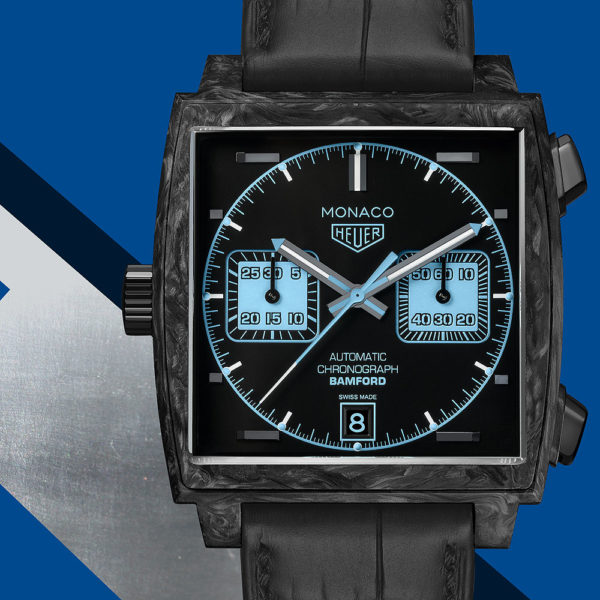
Was there anything you missed compared to previous years?
RR: Swatch Group’s entry-level brand Certina still hasn’t fully embraced its rich history in my opinion, but the DS PH200M is a first step in the right direction. Non-watch related: After 18 years of attending the show, I still find it extremely difficult to get something affordable/healthy to eat during the show… and a reliable Wifi connection outside the press center.
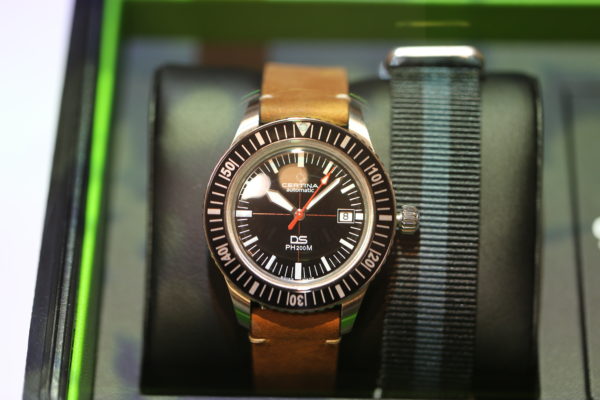
MB: As a veteran Baselworld visitor (12 years), there are always changes from year to year that make me wistful for previous fairs. The absence of Breitling’s iconic fish tank at its booth, emblematic of the many changes that brand has been making with Georges Kern at the helm, was noticeable — as were, of course, the absence of several of the larger booths of brands that either fled Baselworld for SIHH or simply didn’t participate this year. It was odd, for example, to not see Hermès’s iconic booth greeting me at the top of the Hall 1 escalator, or the entrance to the Movado Group’s complex looming over my multiple entrances to the South Hall press center. On a personal note, I missed the presence of Bollinger, the Champagne of James Bond, at my one end-of-day unwinding session in the lounge at the Omega booth. A First World problem, to be sure, but perhaps a small sign of Baselworld 2018 budget trimming.

LRB: While I’m still a Baselworld neophyte compared to my colleagues, a few general complaints I heard were focused on the lack of internet connectivity throughout the main halls, the closure of Hall 1.2, and the overall weather throughout the week. On the last point, I heard multiple times that this was the most frigid Basel that many had experienced in over 30 years.
You can view all our Baselworld 2018 coverage here.

